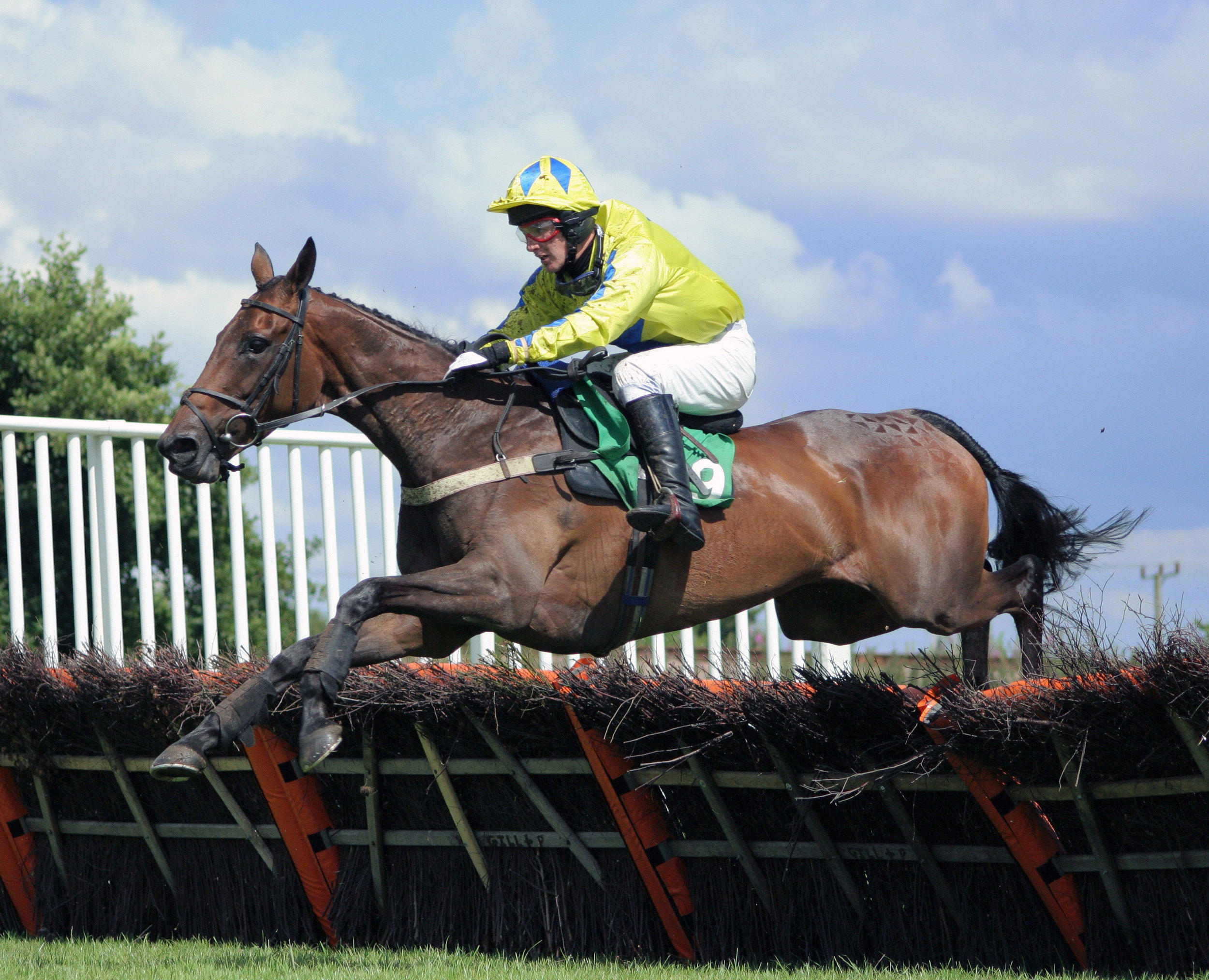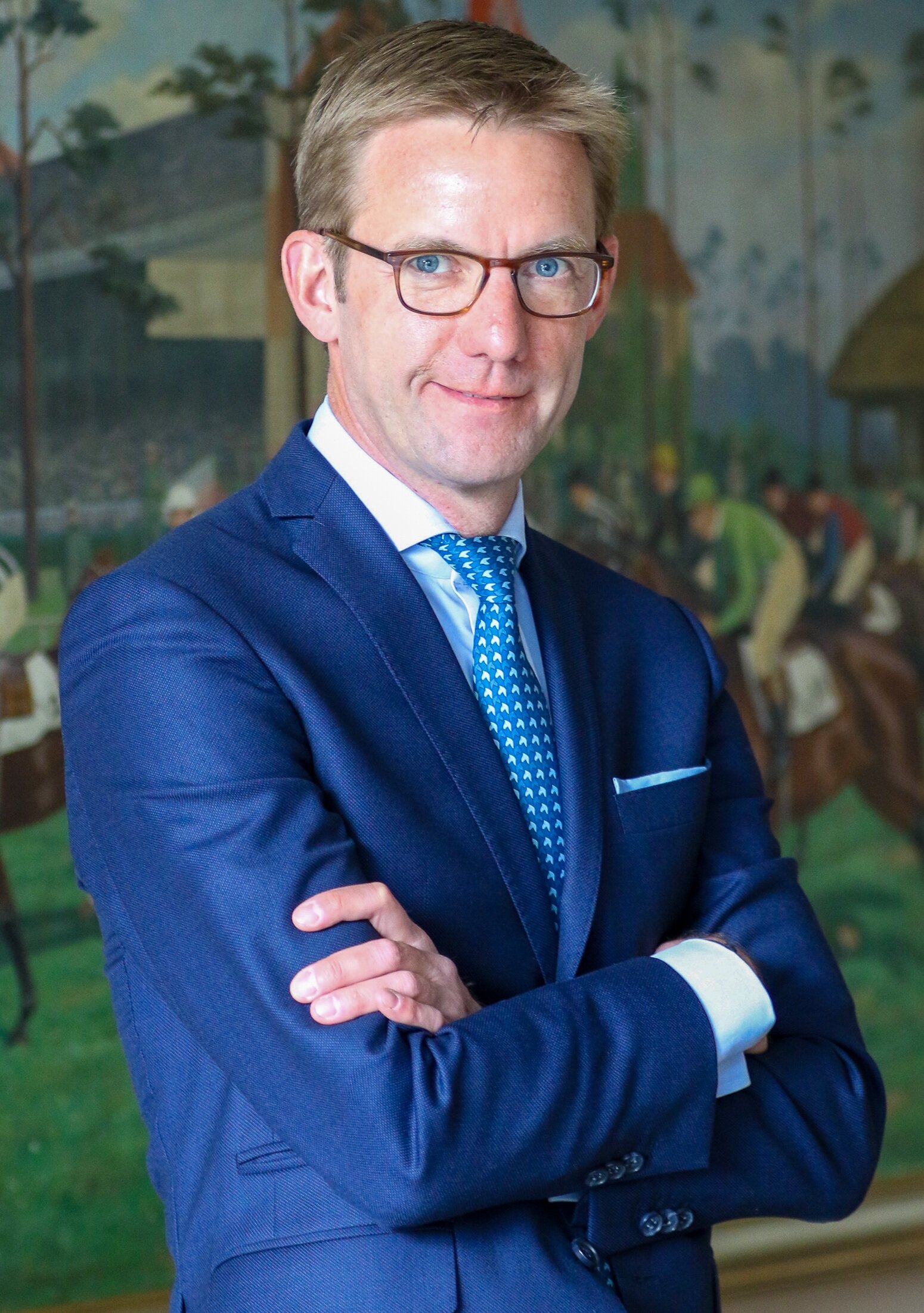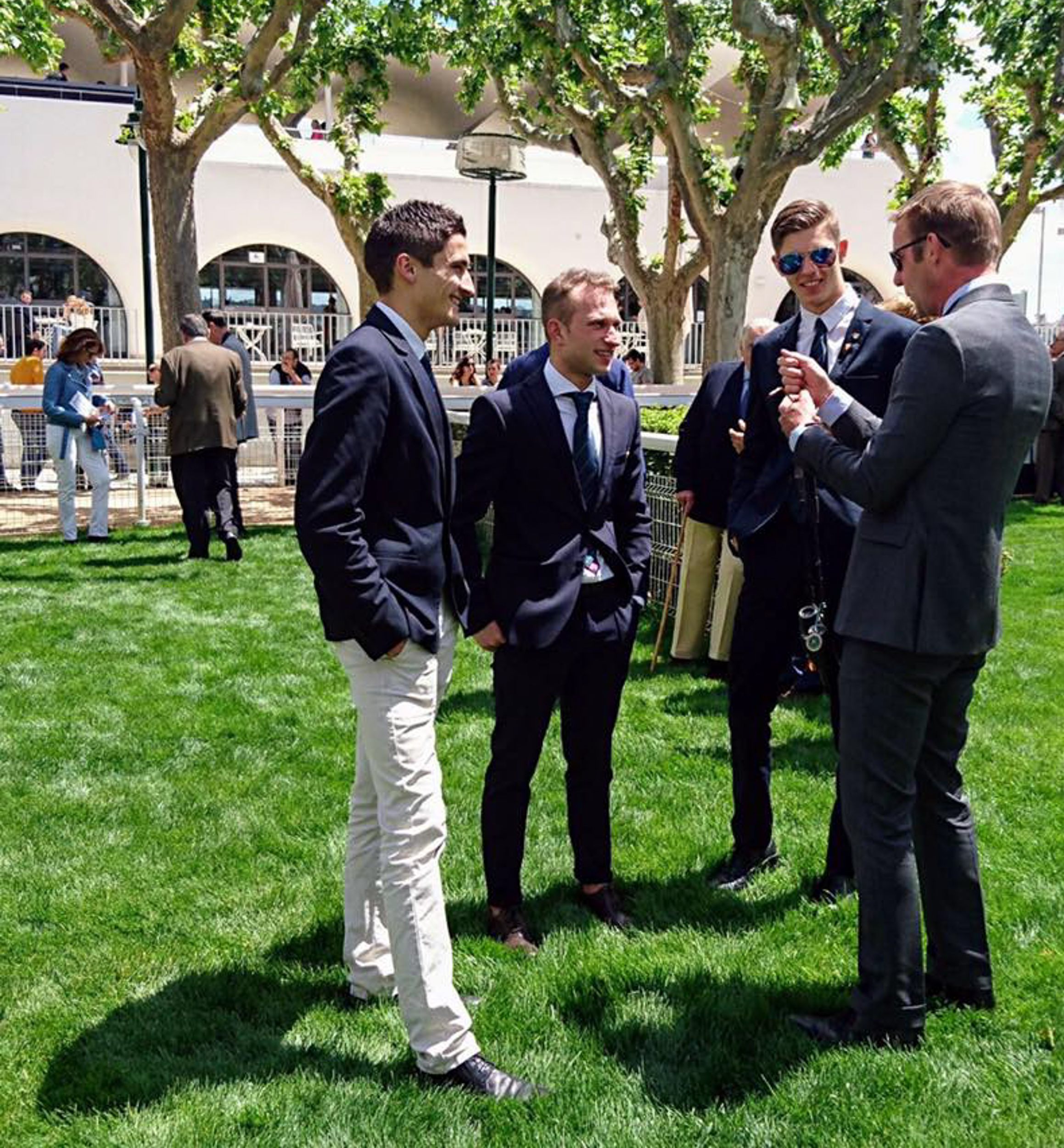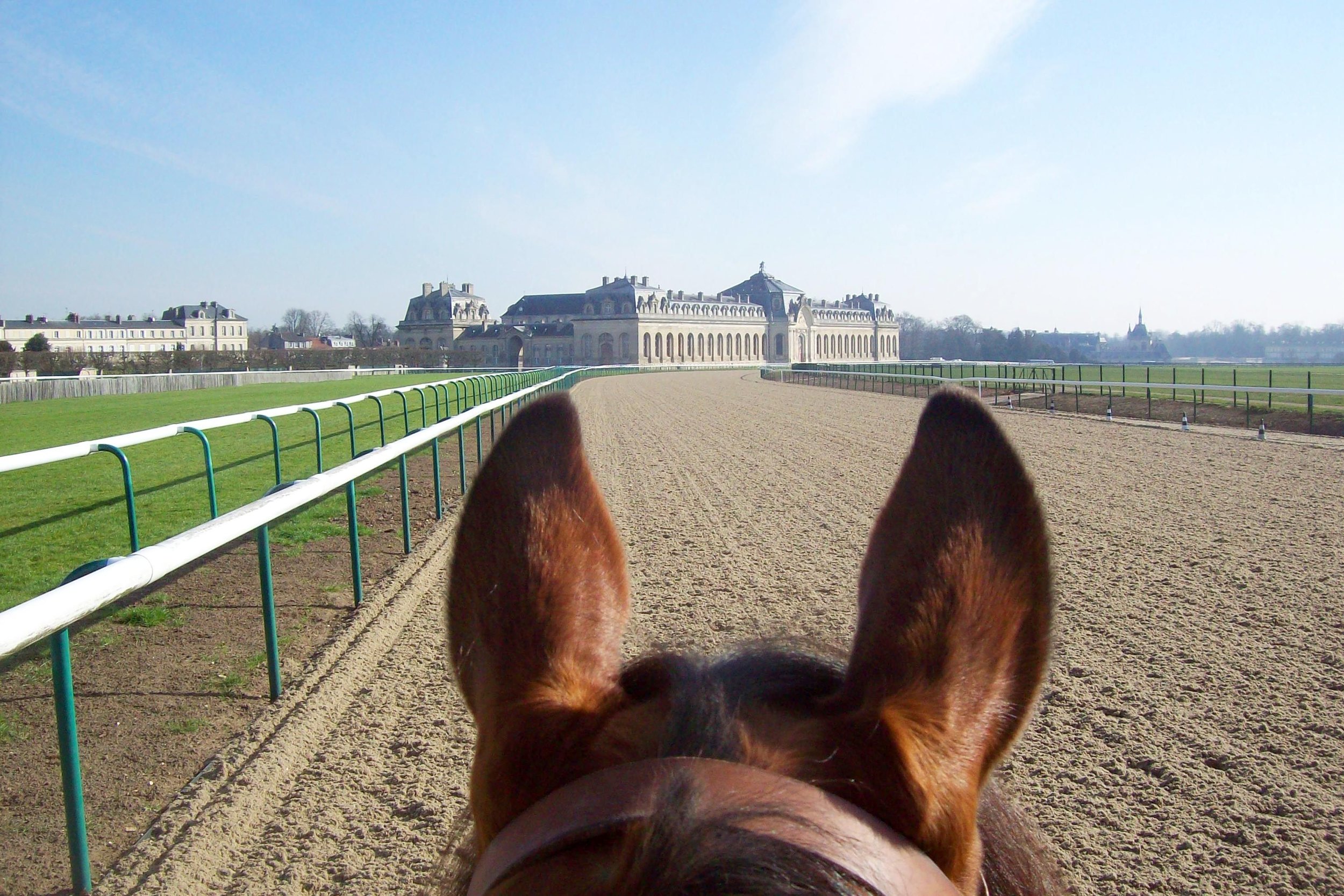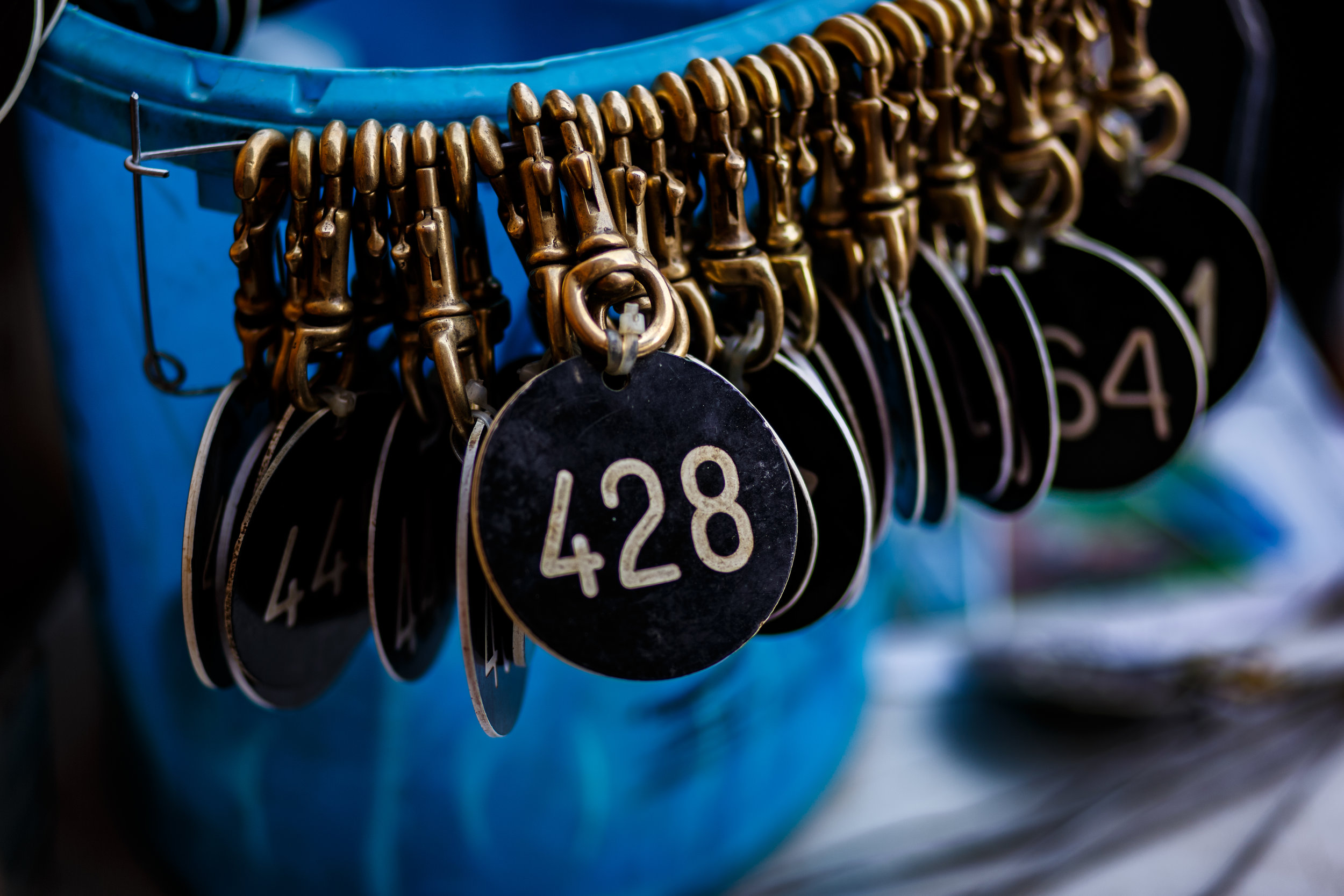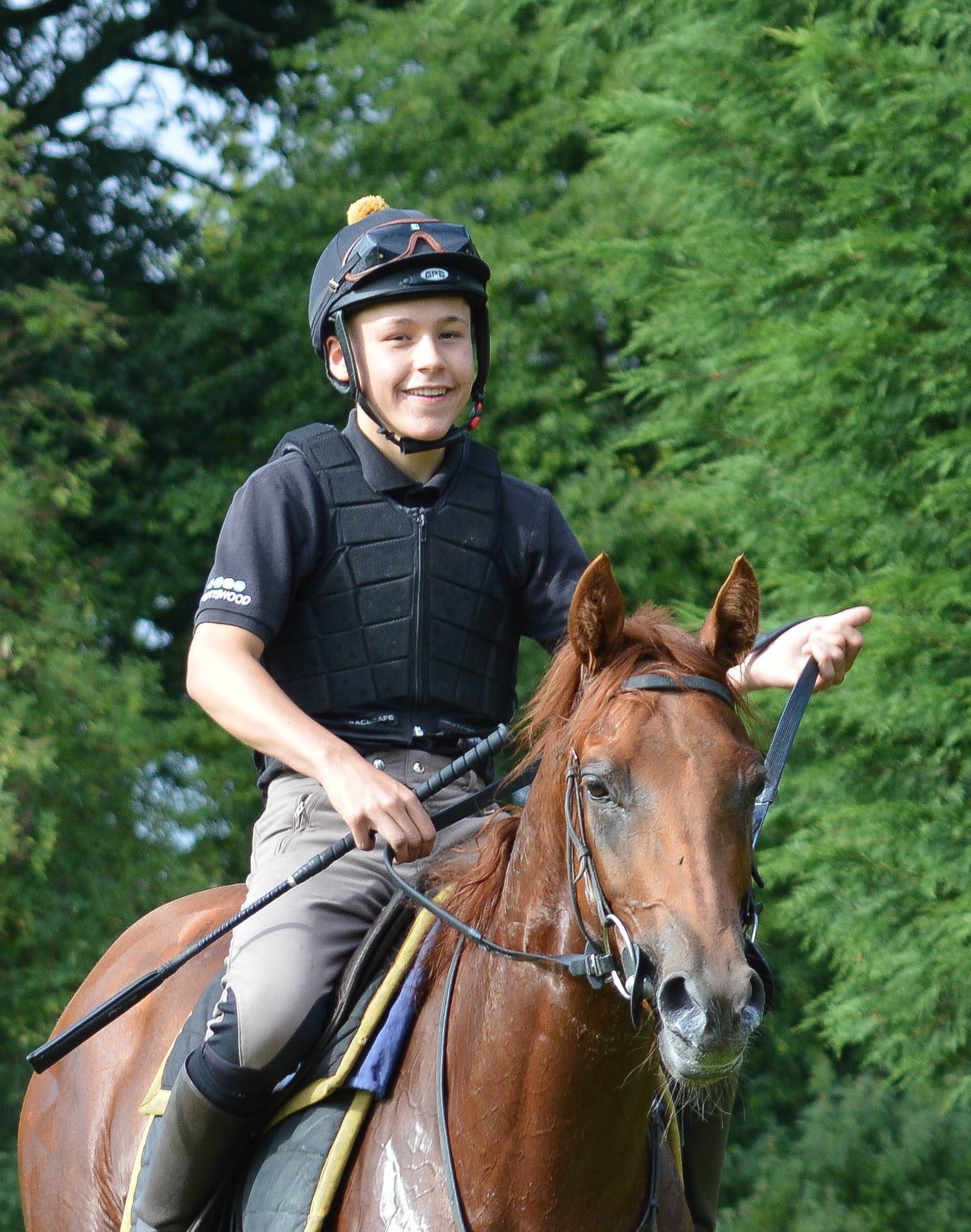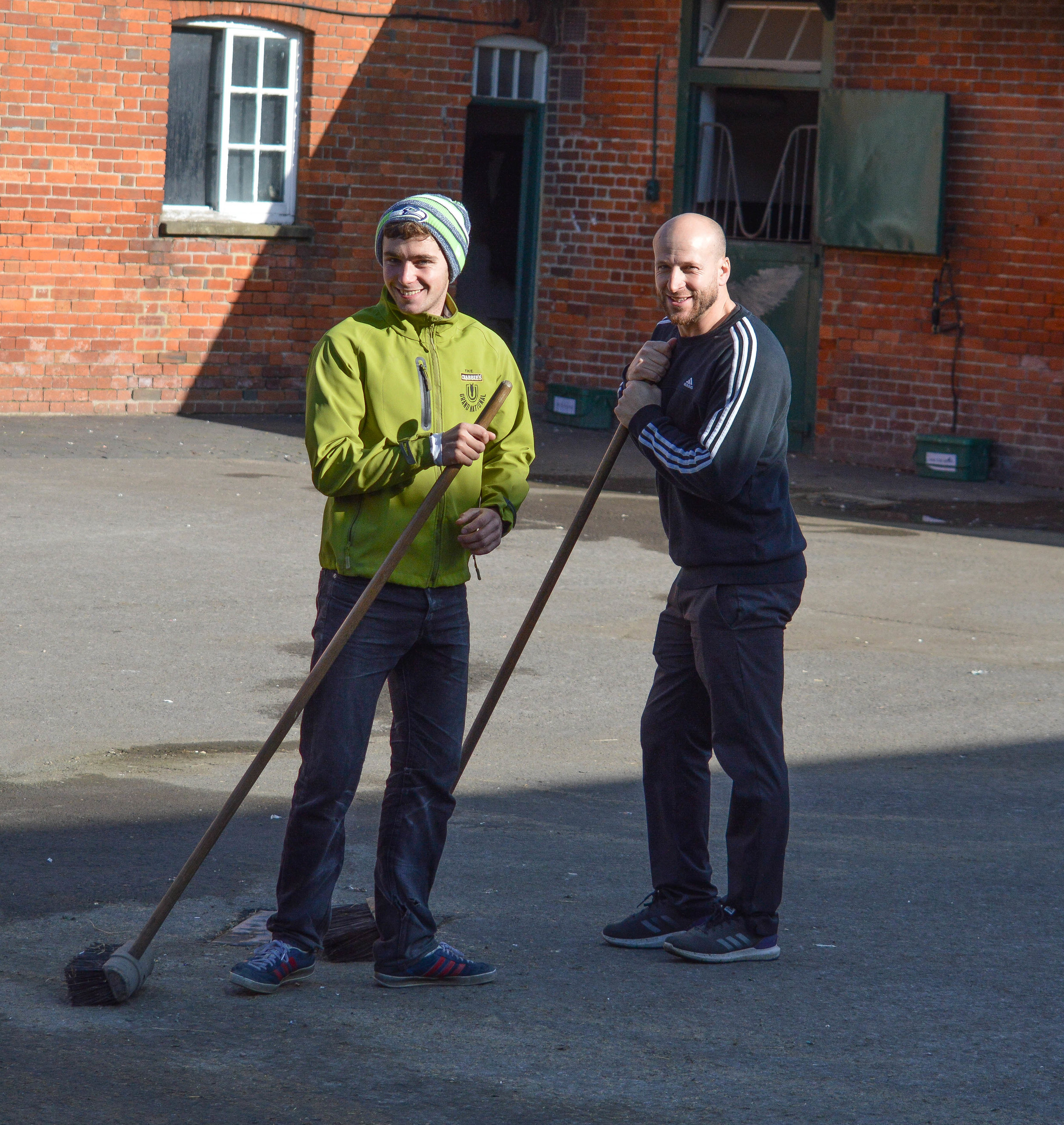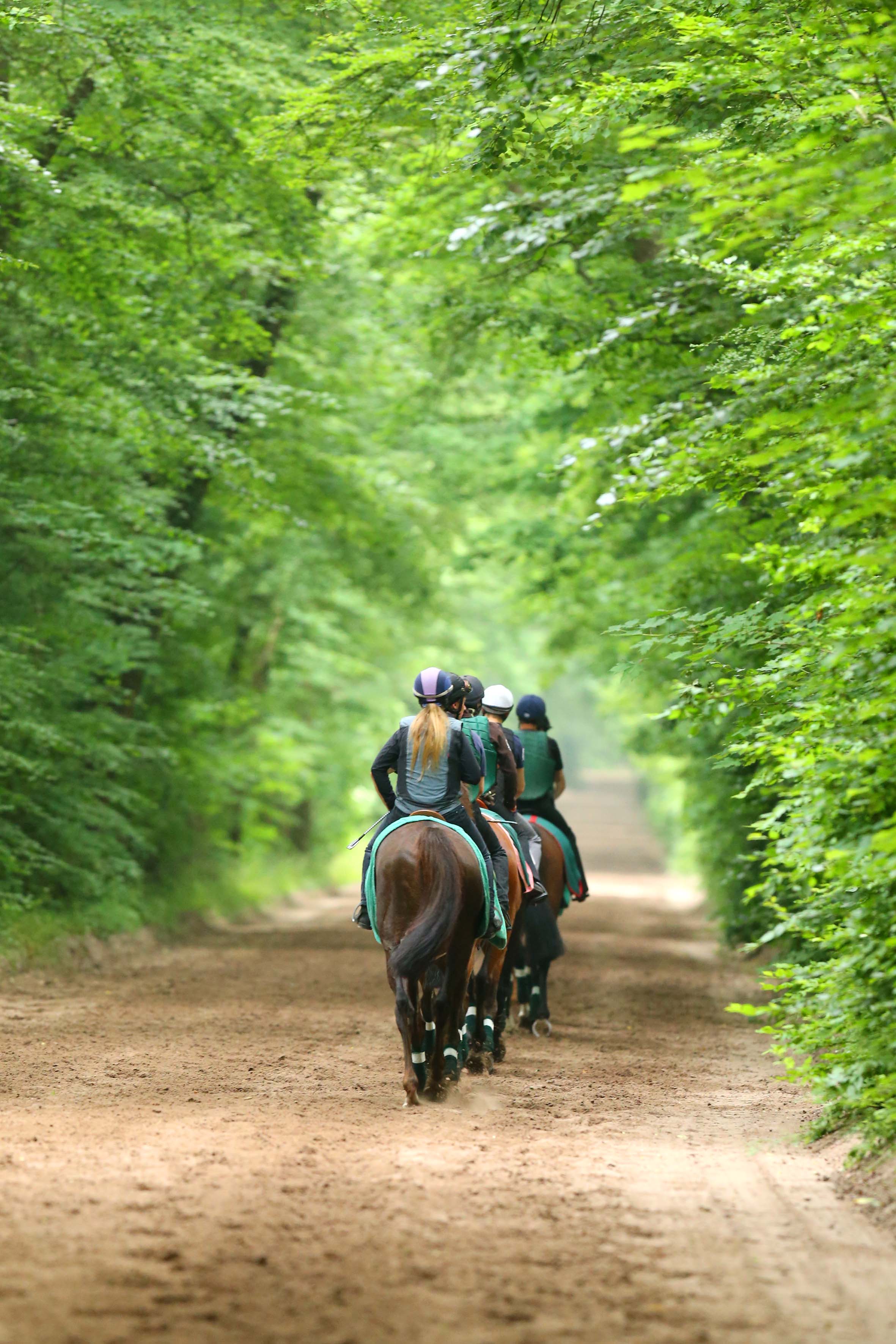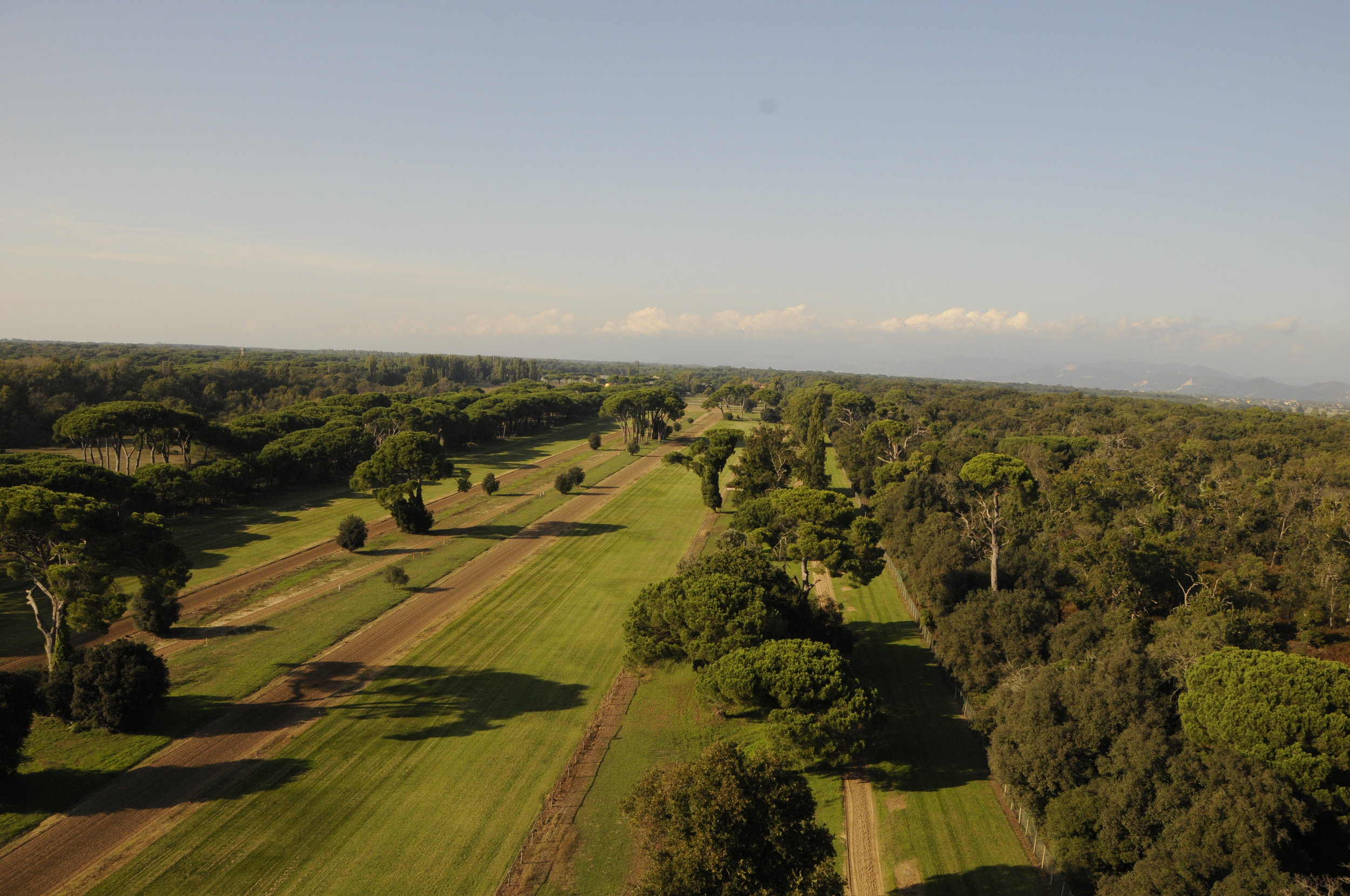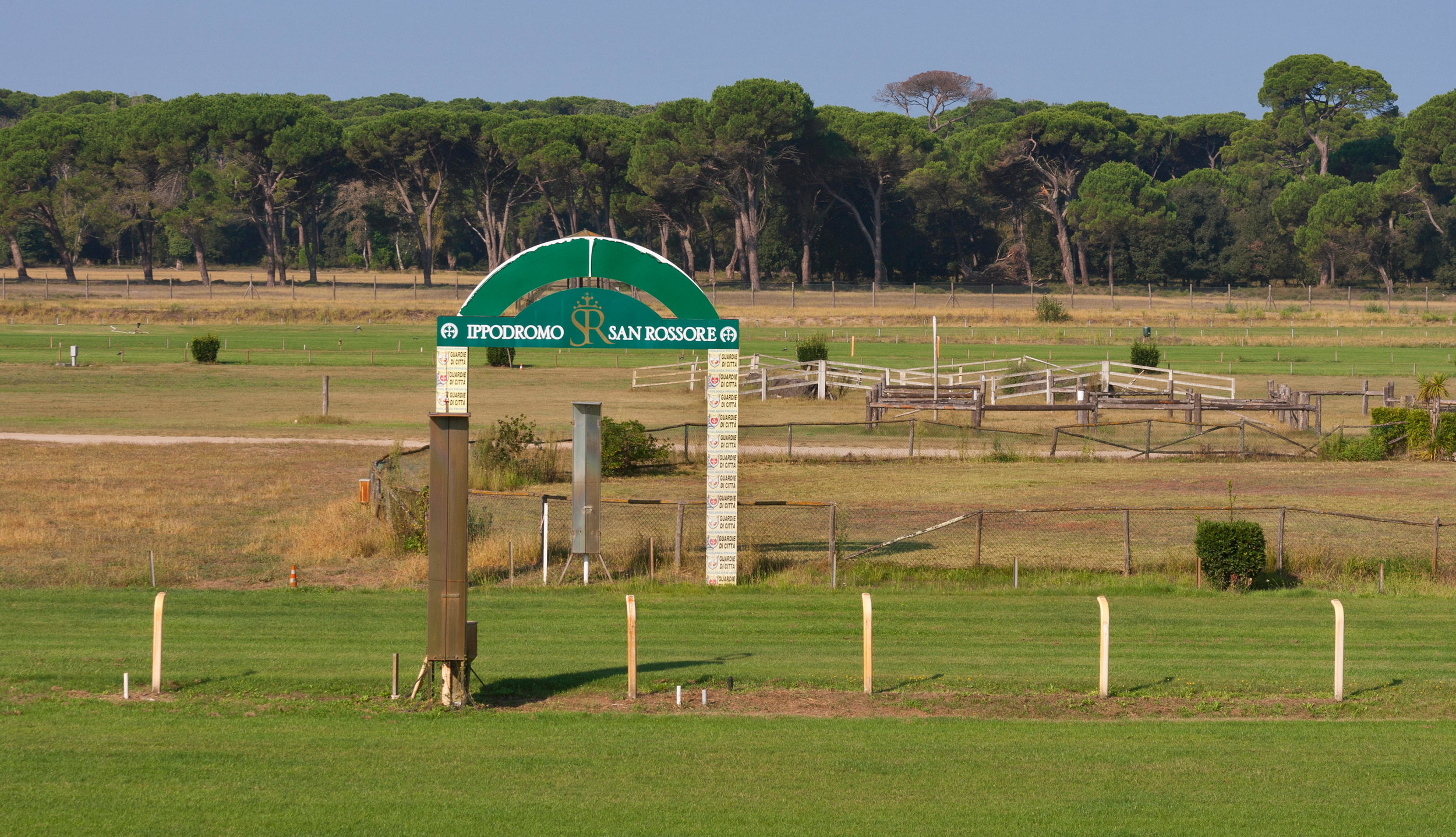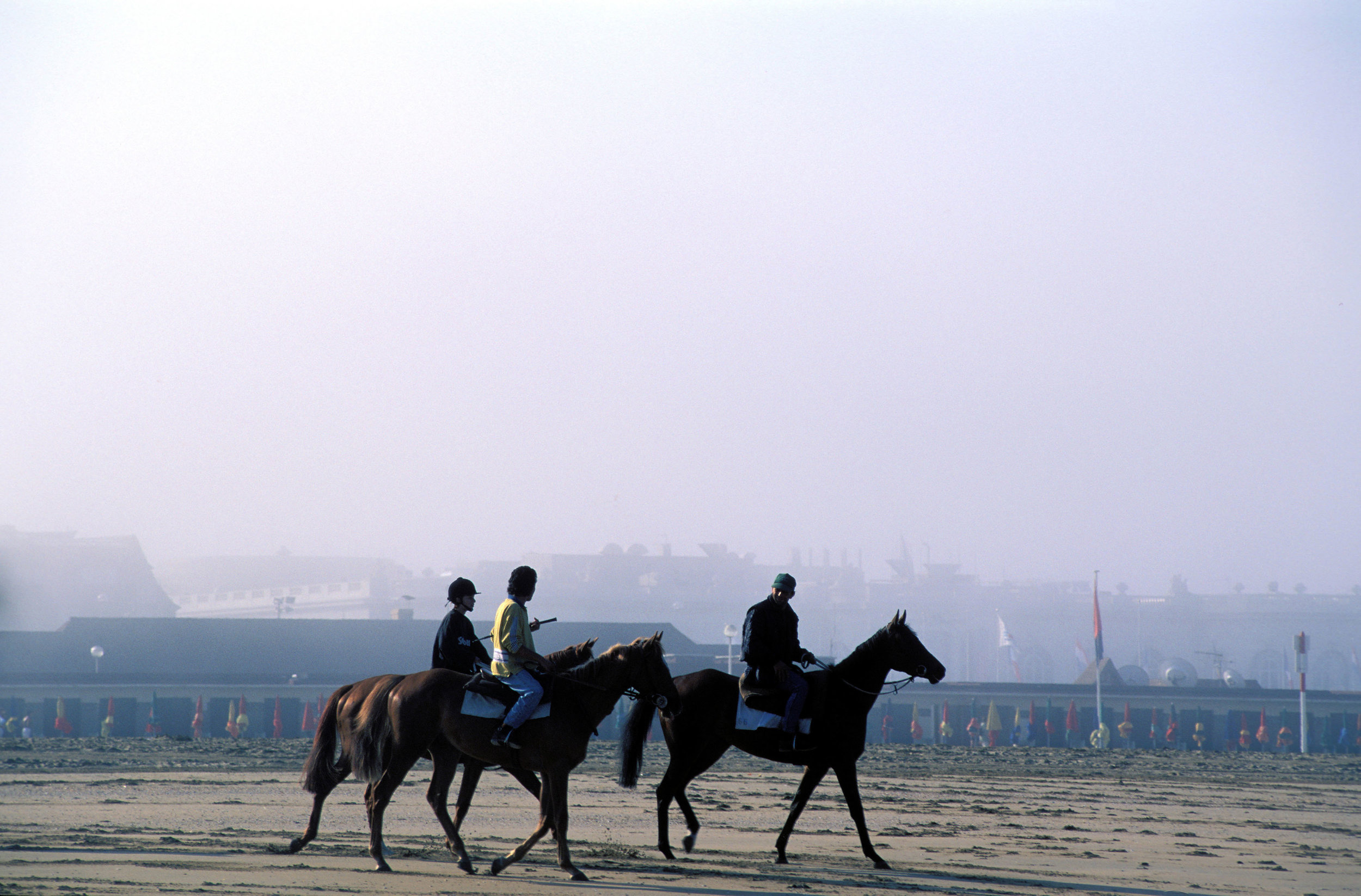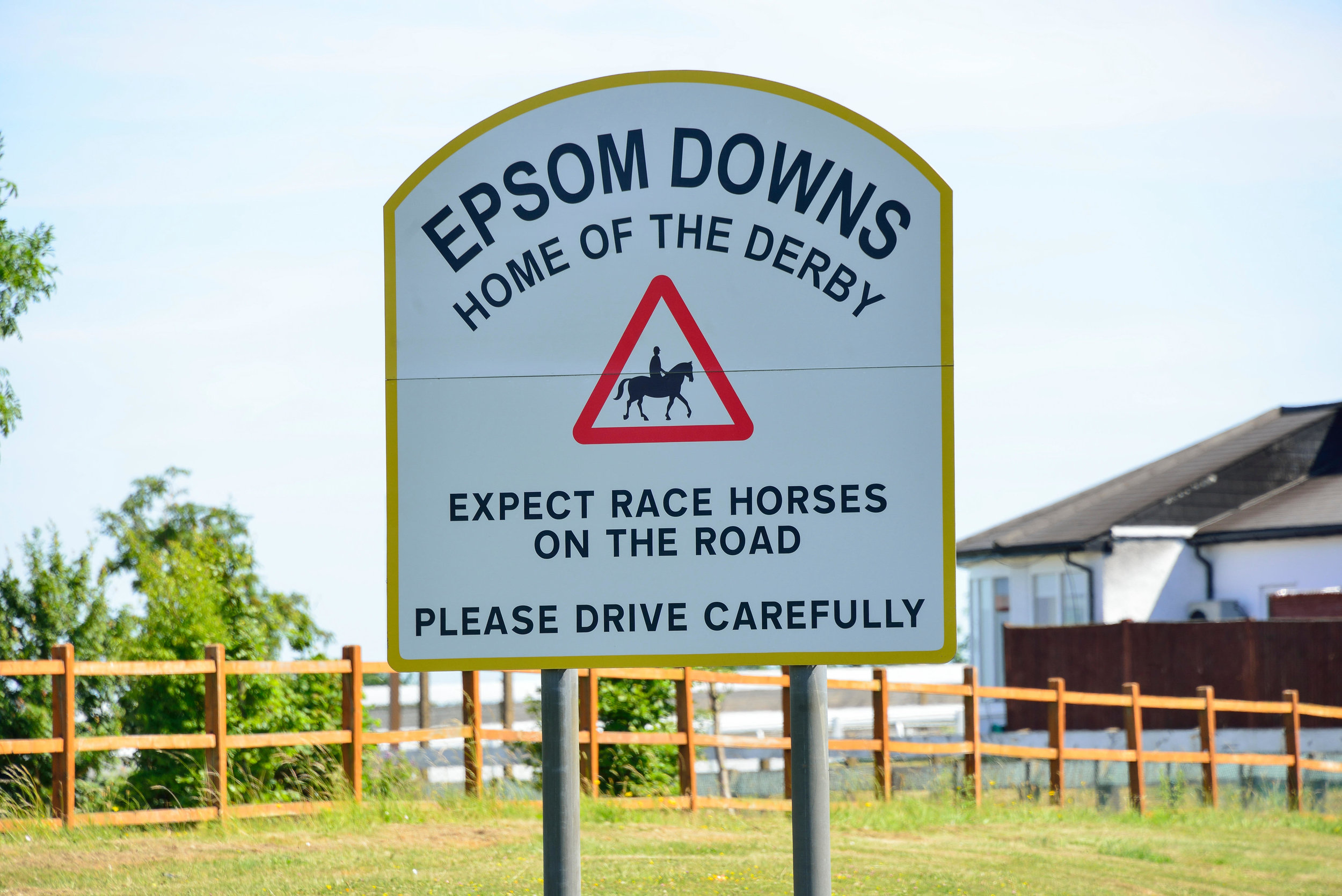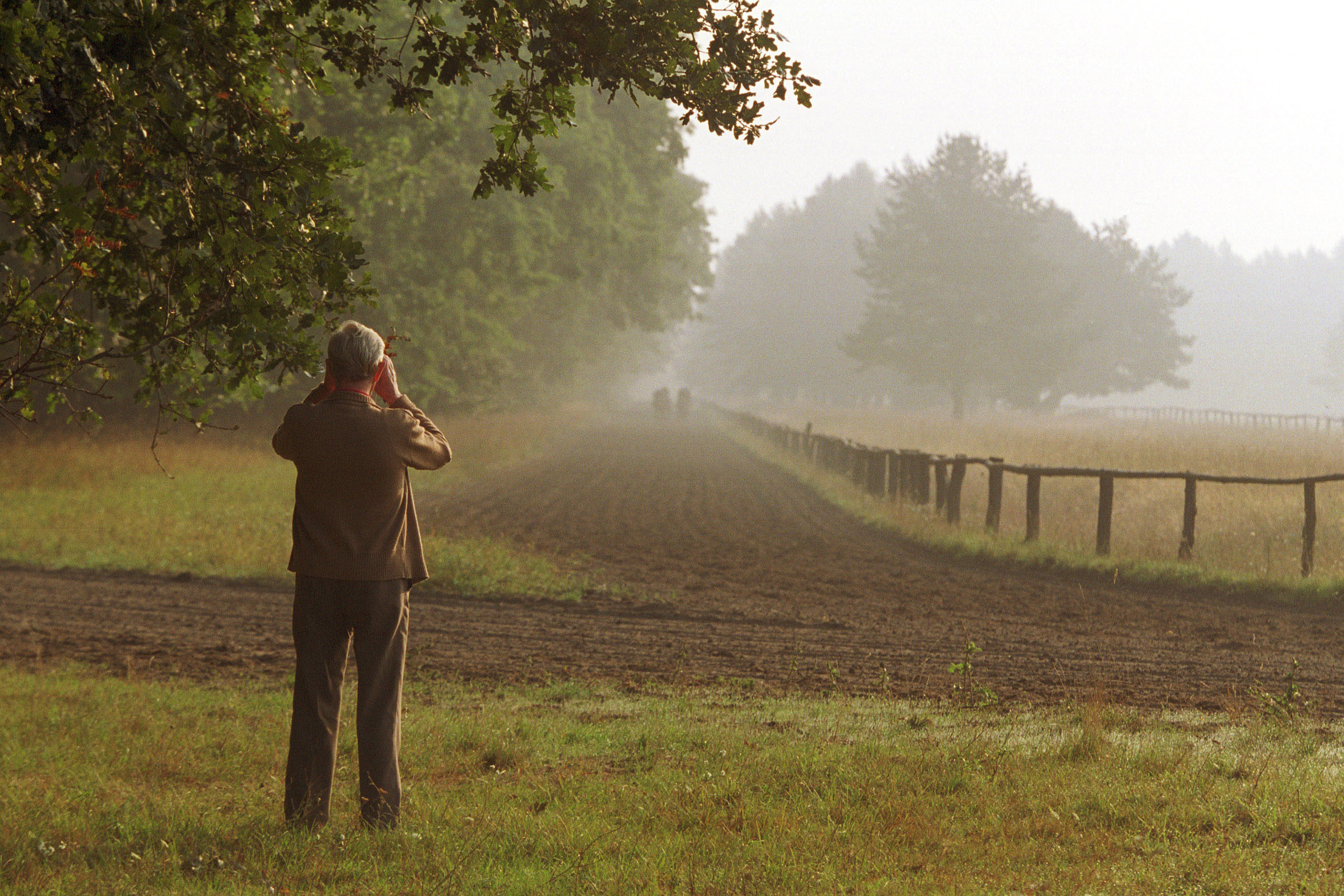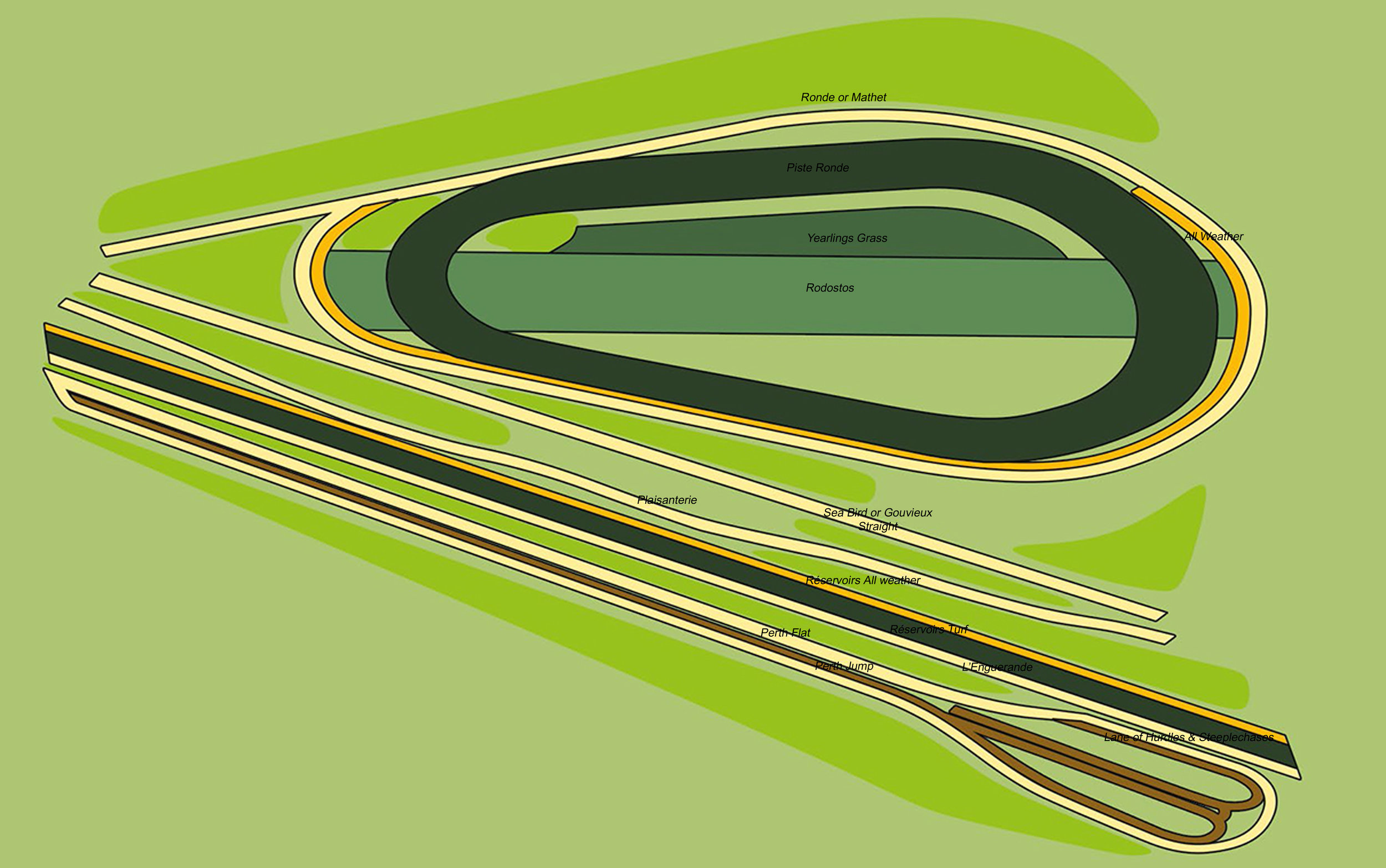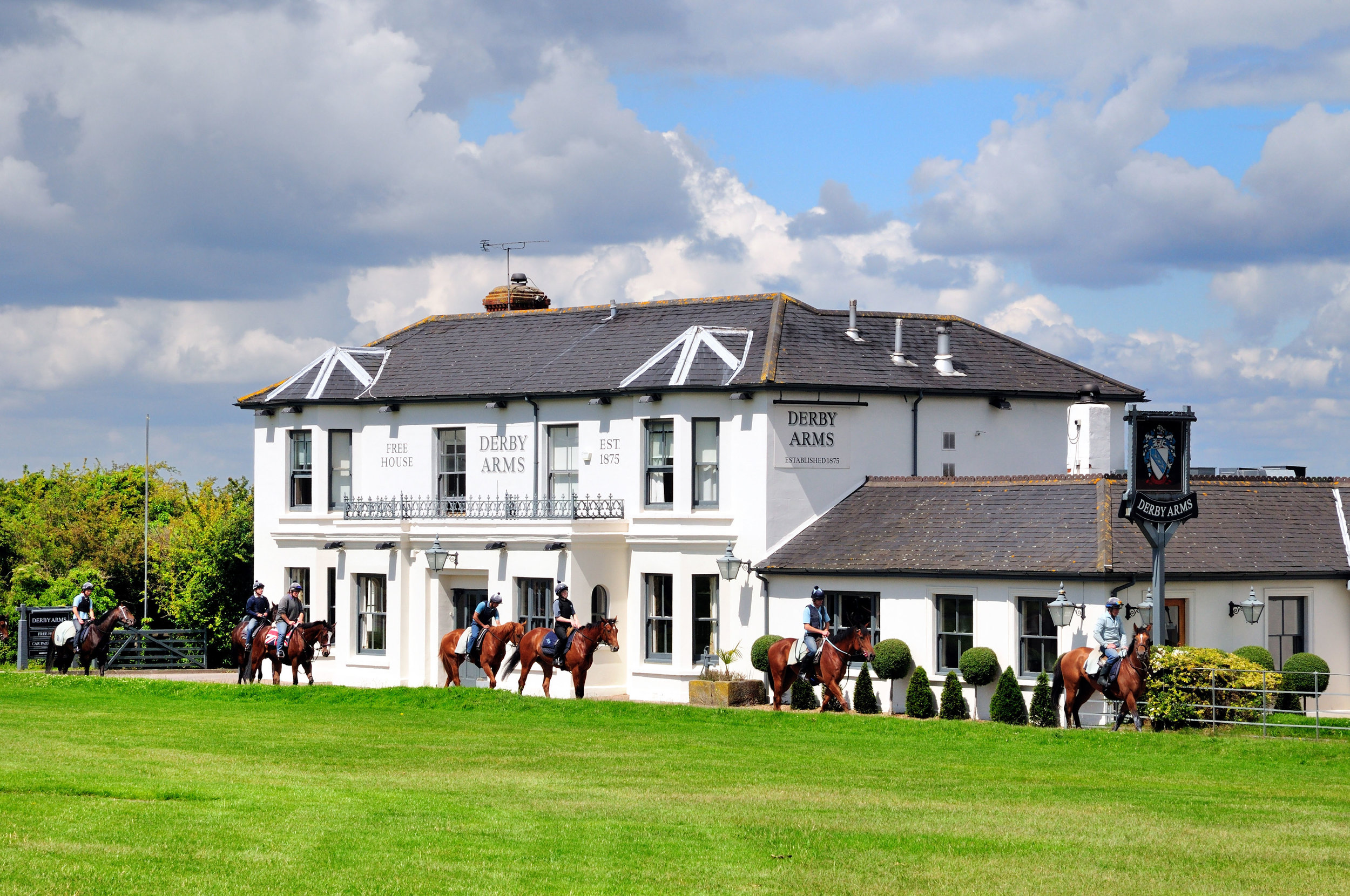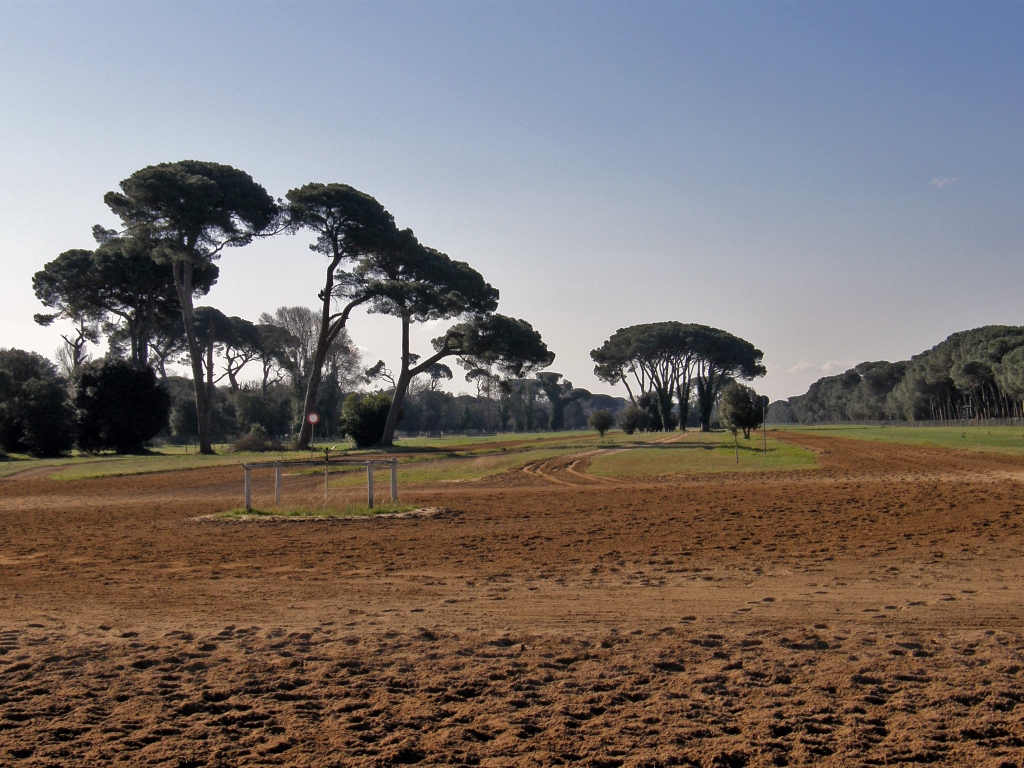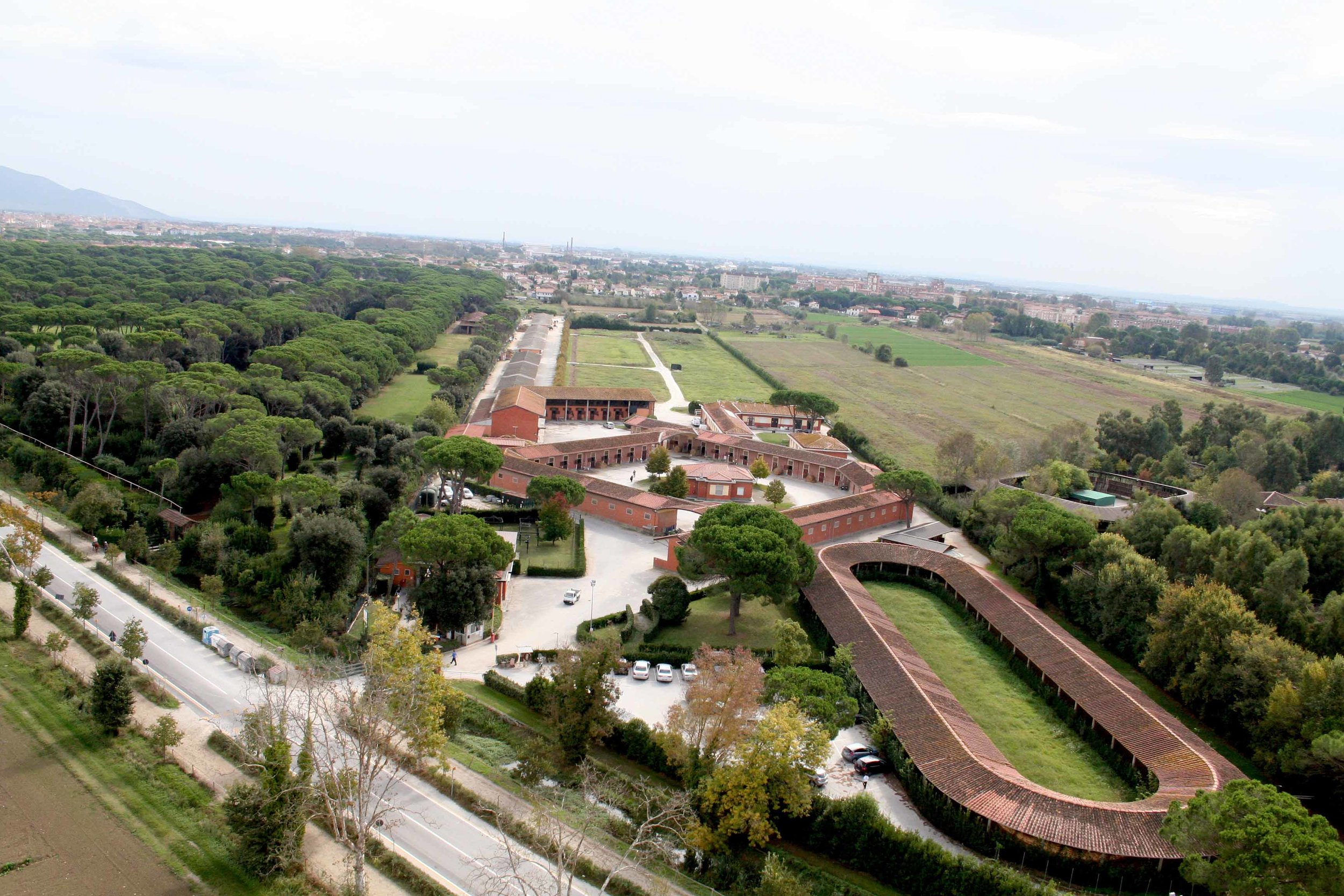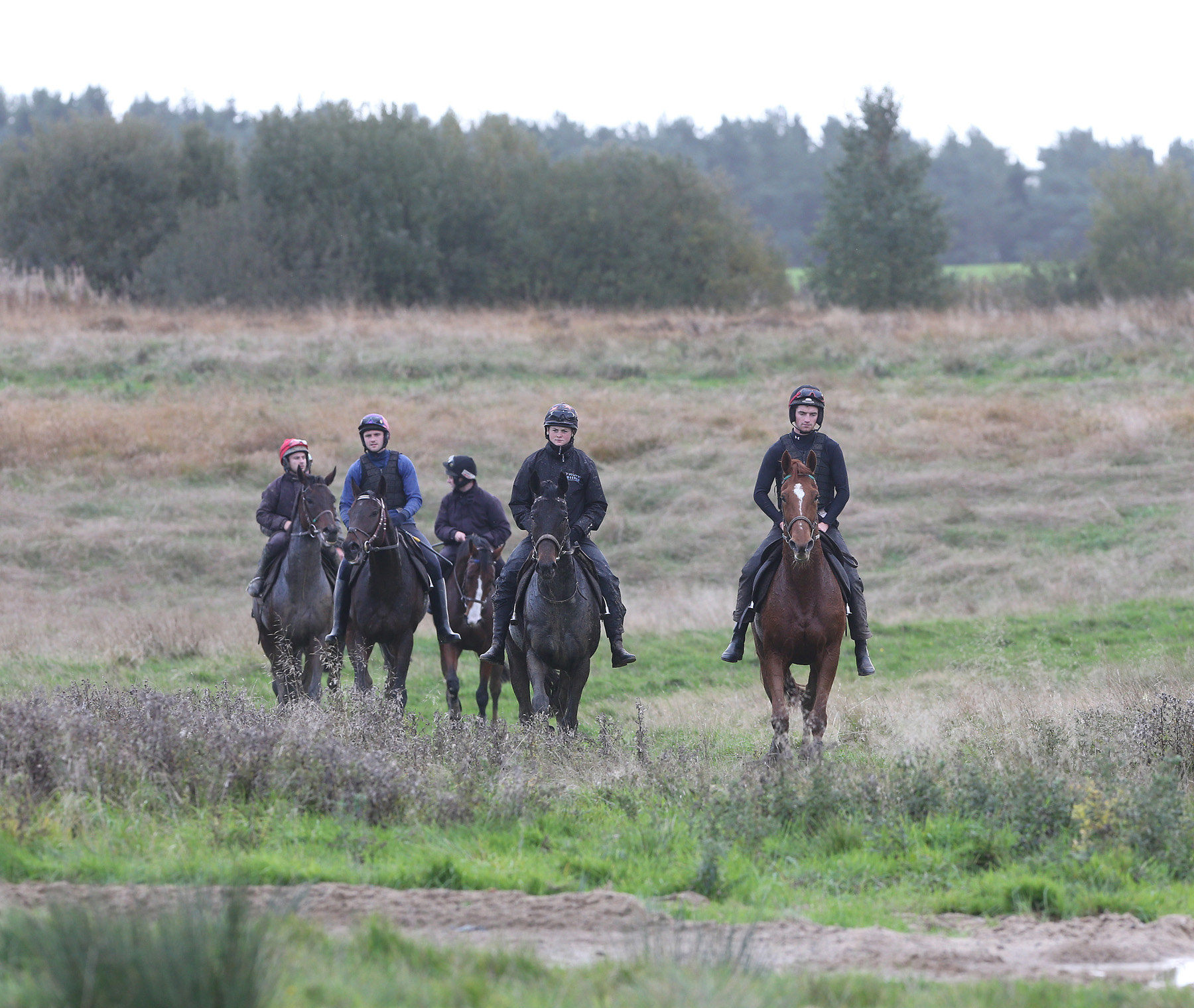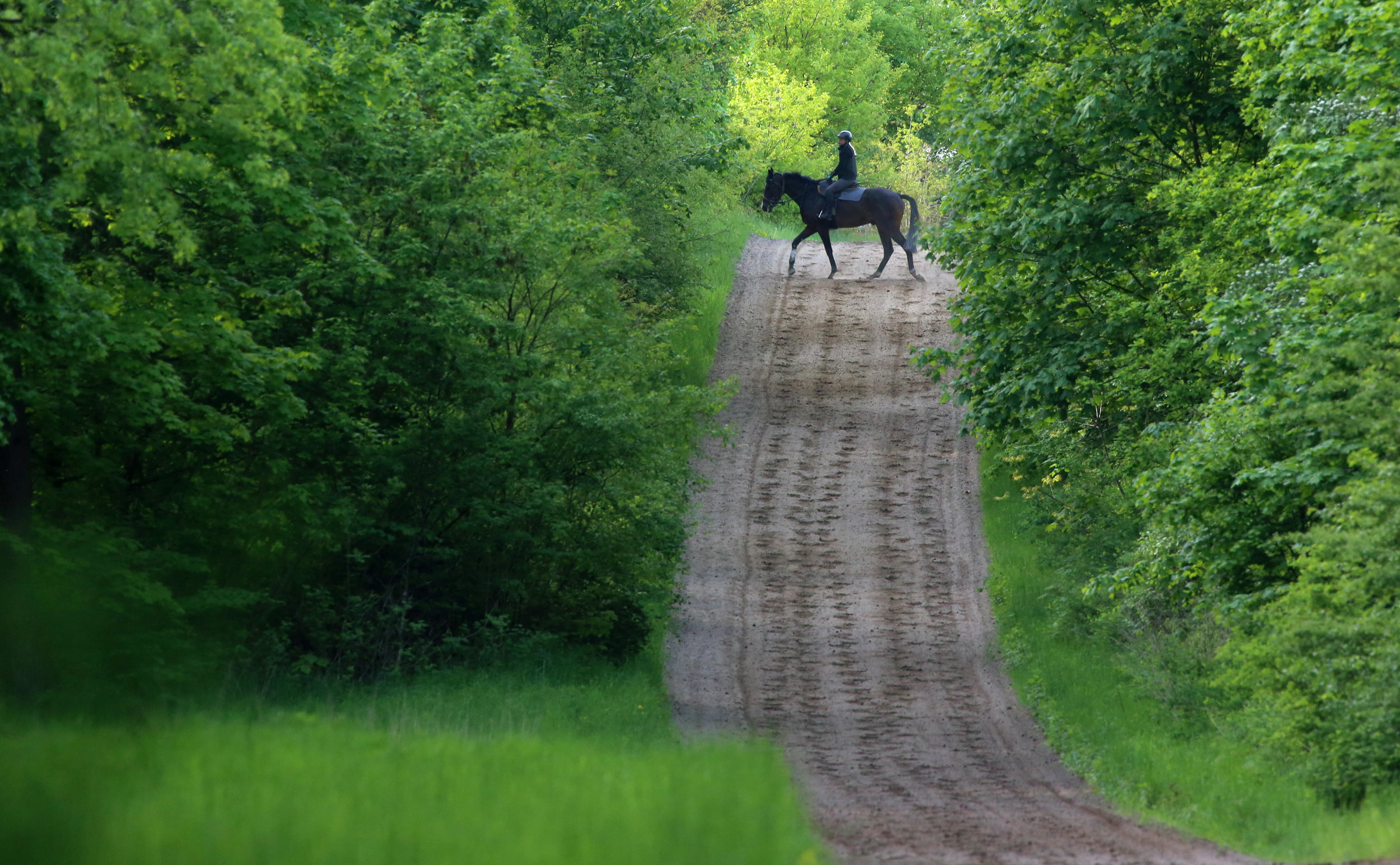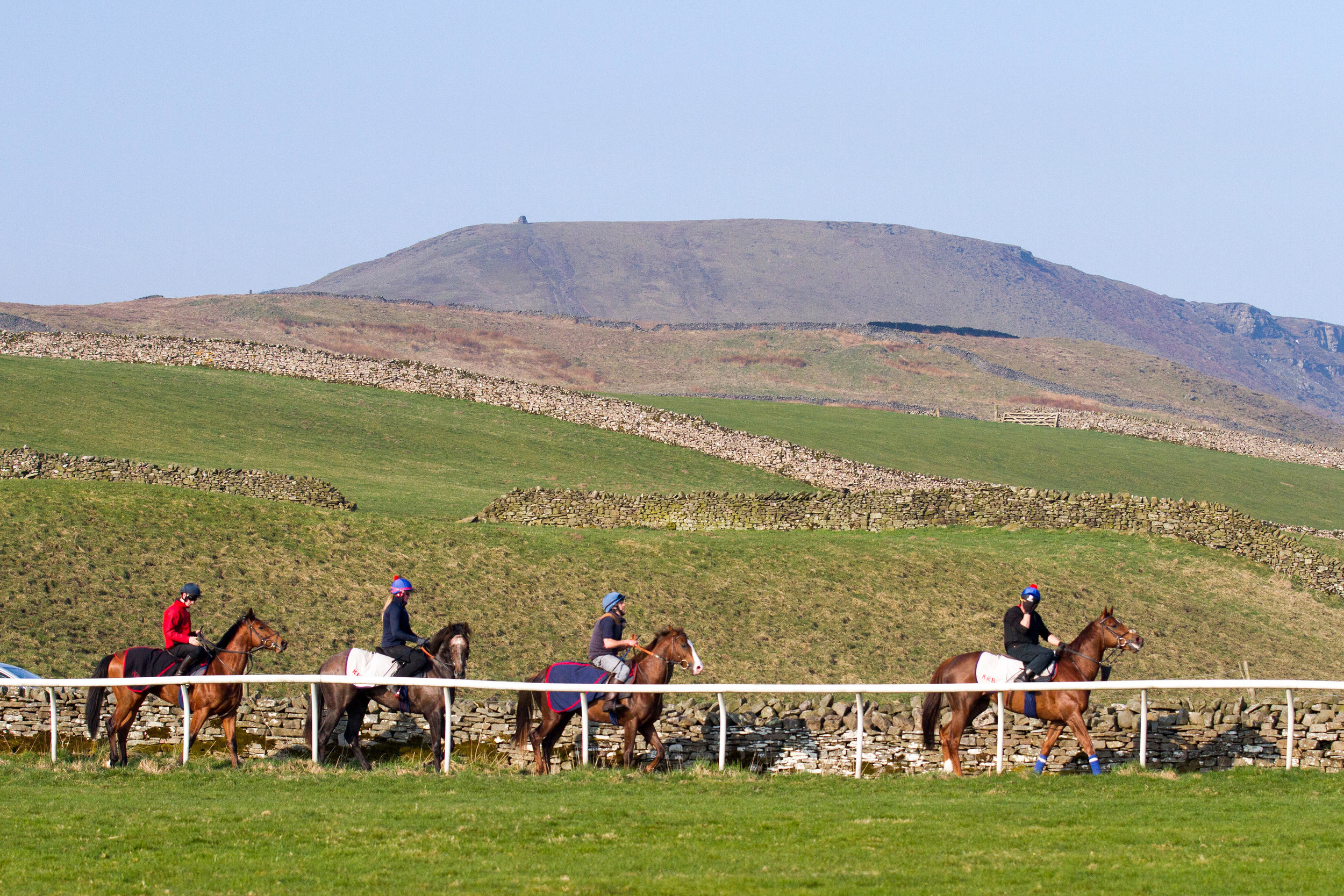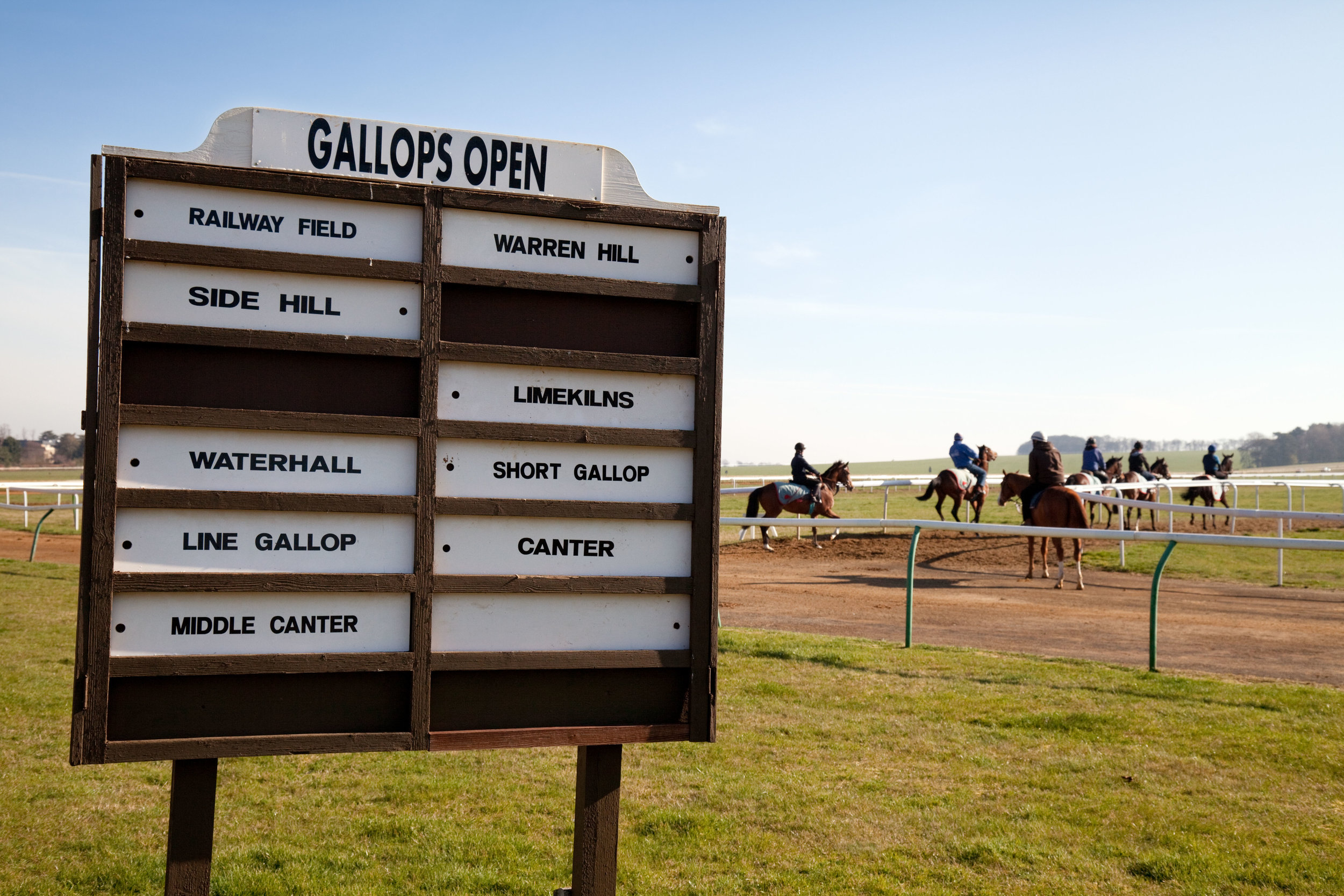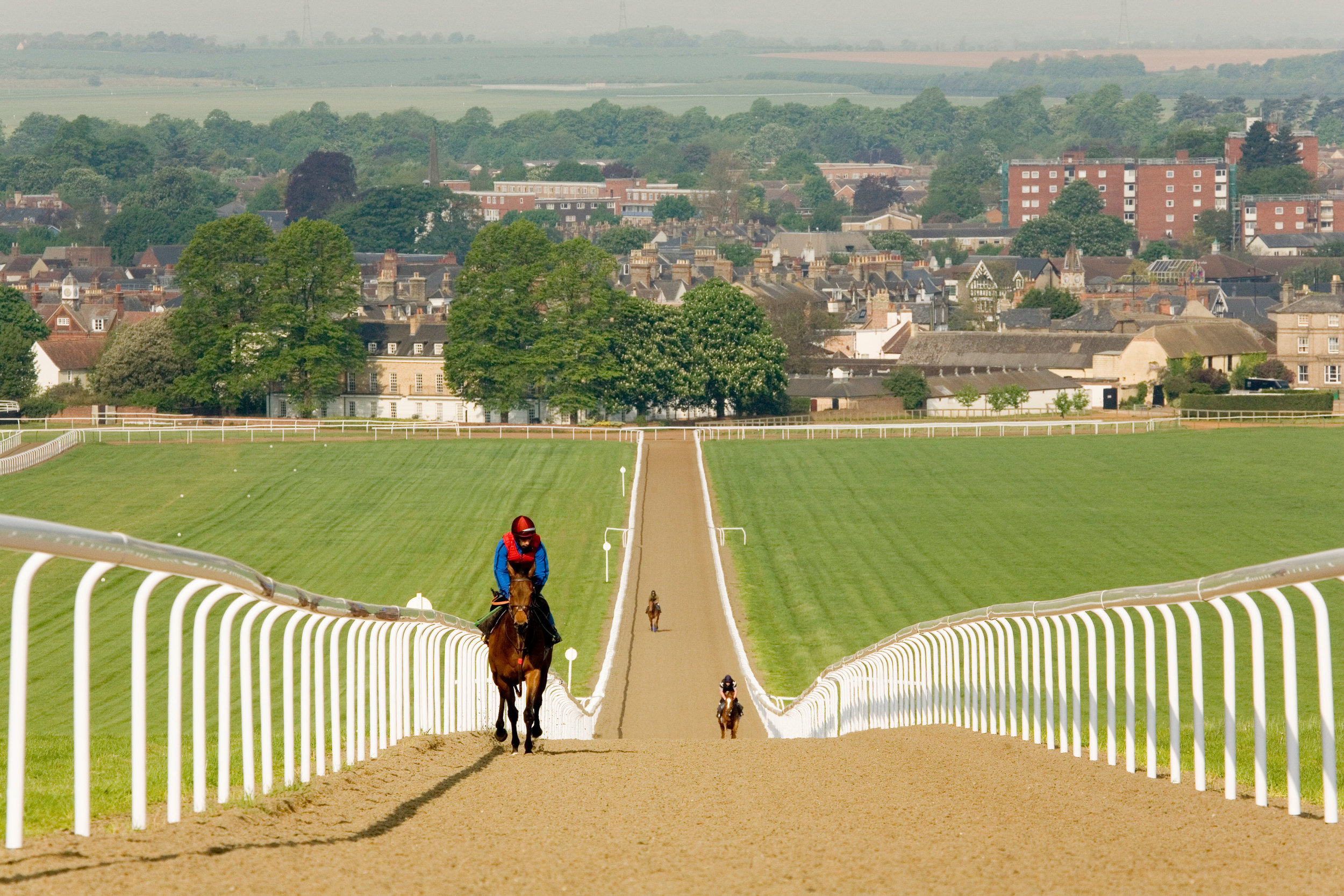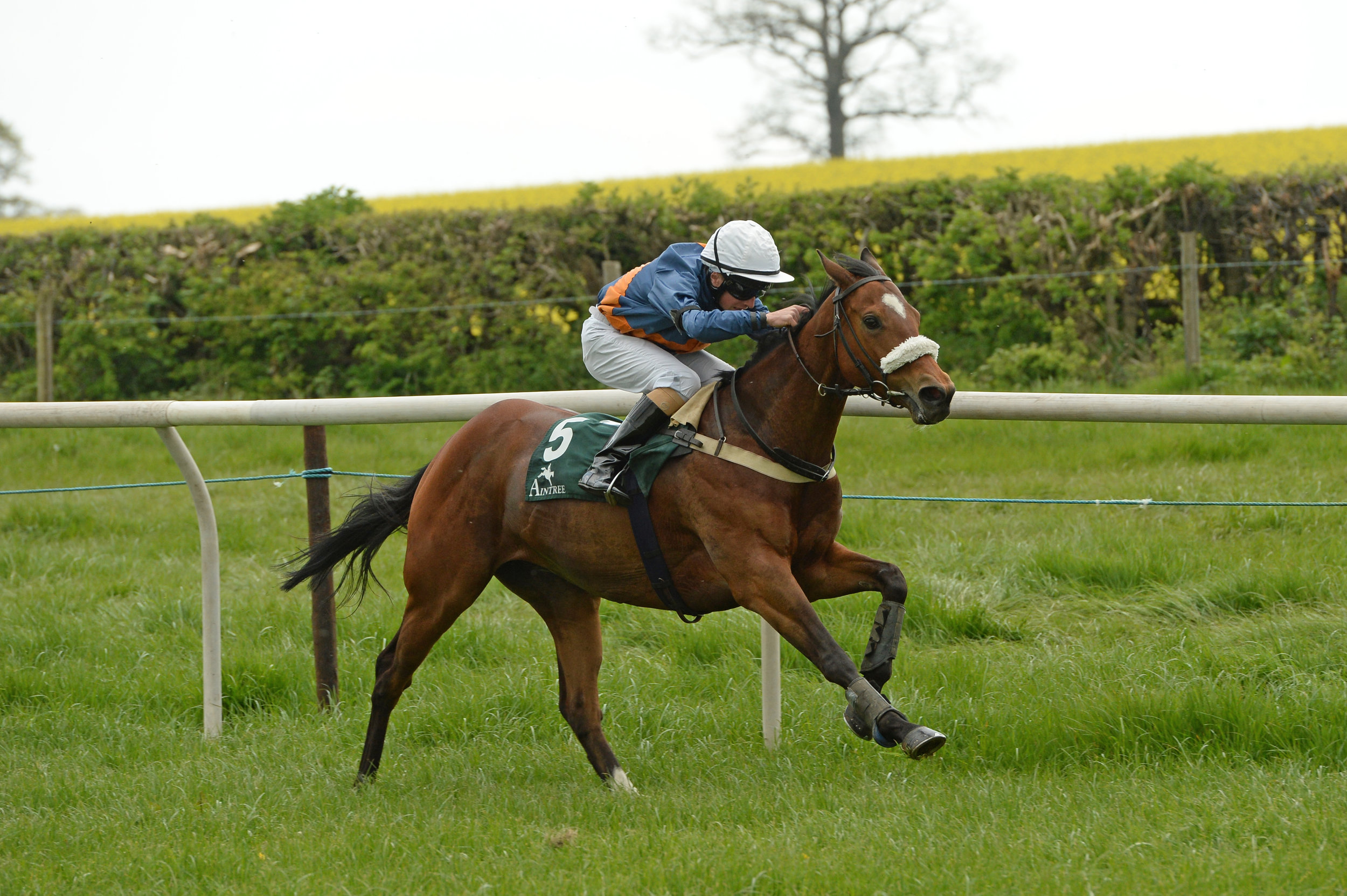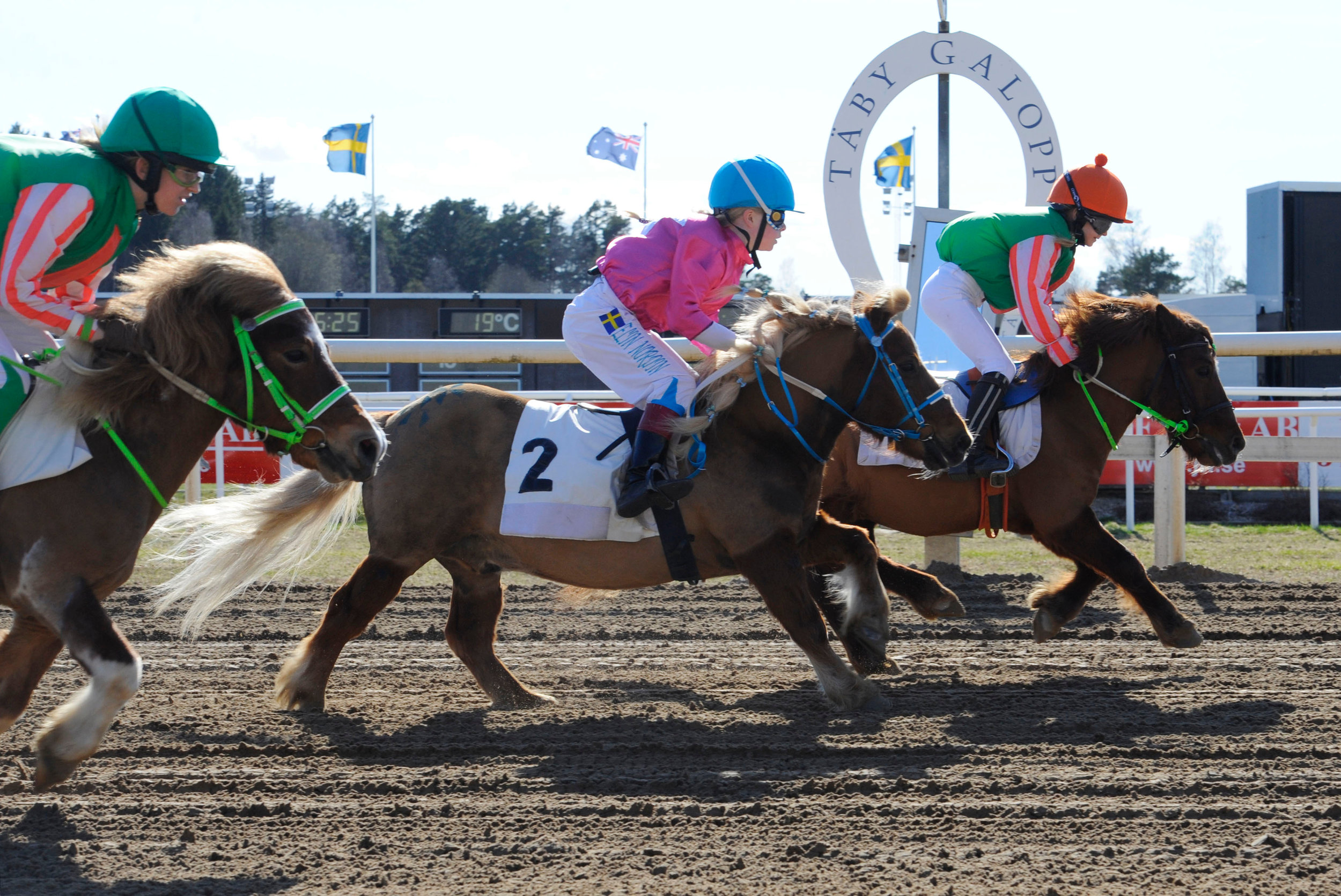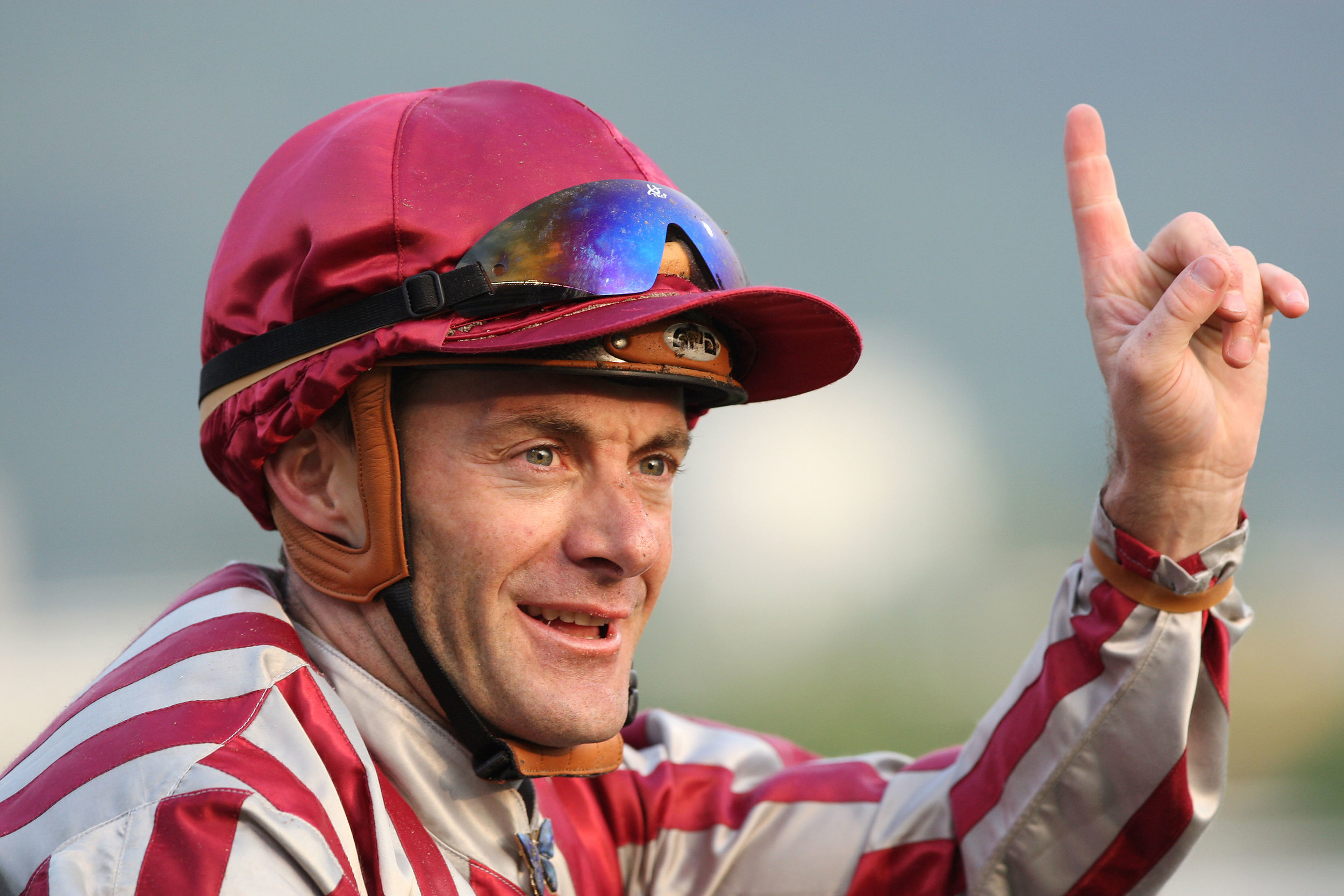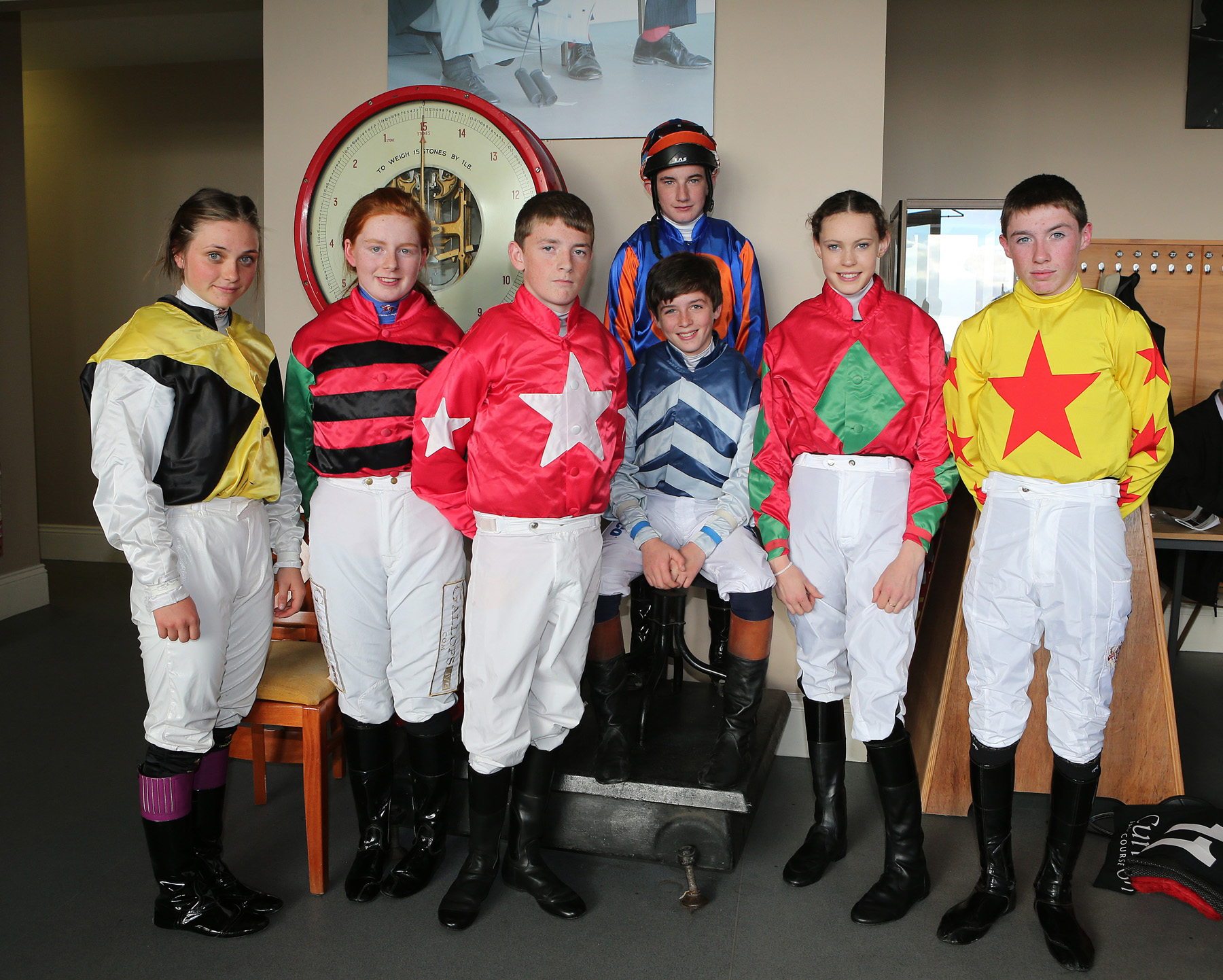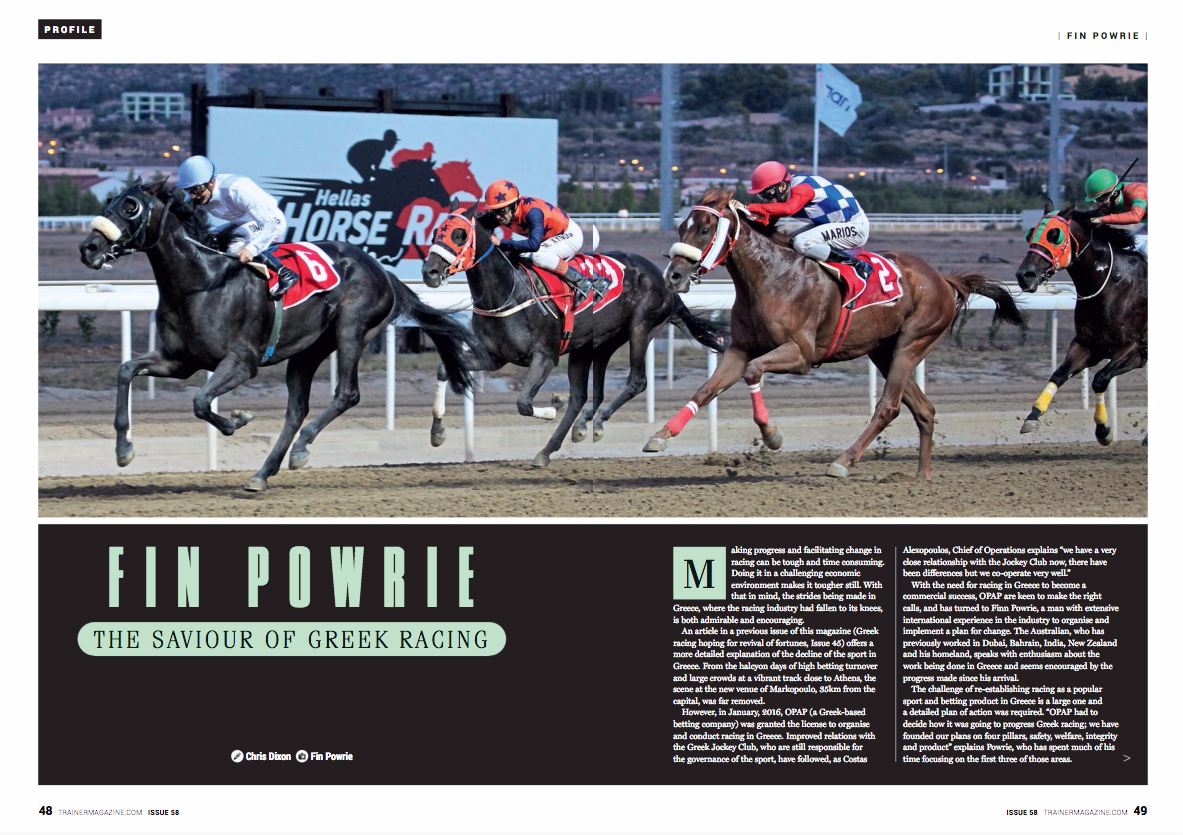Why are leg boots not commonly used in racing?
By Dr. David Marlin
Lower leg injuries are extremely common in all types of race and sport horses. Risk factors for traumatic injury from shoes on other legs due to over-reaching or brushing or even from other horses in racing or polo include high speed, jumping and rapid turning. Injuries can also occur from sharp stones being thrown up from the ground. Whilst in sports such as eventing and showjumping, it’s unusual to see horses competing without leg protection at least over the forelimb tendon area; in racing the use of protective boots is much less common. This is also true for polo—a sport which would present a high risk of injury to the lower leg due to balls, sticks, high speed, turning and close proximity to other horses. So is the risk much lower than we might expect, or is their some other reason why boots are not commonly used in racing?
Epidemiological studies of injuries to racehorses in training and racing certainly don’t point to a large risk for interference-type injuries from shoes within or from other horses. In the younger flat racehorse population, fractures remain the greatest concern both in training and racing. Injuries due to forelimb Superficial Digital Flexor Tendons (SDFT) tendonitis and Suspensory Ligament (SL) desmitis are not uncommon, with a prevalence of around 10-20%. However, information on the rate of injuries due to interference in racehorses is generally lacking.
Whilst an injury to the lower forelimb where the skin has been cut and there is clear penetration is easily identified, this is not the only way that tendons may be injured. Blunt force which does not result in obvious superficial injury may still lead to internal bruising and inflammation. Repeated traumatic insults due to interference may therefore still contribute to tendon inflammation. As we now recognise that most tendon injuries are due to chronic inflammation and damage as opposed to isolated accidents, anything that contributes to tendon inflammation is a cause for concern.
The risk to tendons from the heat generated during exercise may be one of the reasons why racing has tended to shy away from the widespread use of boots, except perhaps in the case of individuals suffering repeated or severe injuries. Wilson and Goodship at Bristol Vet School showed in the 1990’s that equine tendons reached temperature of around 45°C during galloping. Tendons are essentially large elastic bands which store and release energy on each stride—one of the adaptations that makes the horse such a supreme athlete. In the same way that if we stretch an ordinary rubber band, it will heat up. Tendons have a poor blood supply, and so the heat accumulates and the tendon increases in temperature during the gallop; the longer and faster the gallop, the higher the temperature. Why is tendon temperature a concern?
Heat: Tendon cells appear to be sensitive to increases in temperature. When isolated tendon cells in culture were heated for 10 minutes at 45°C (113.0°F), around 10% died; but when they were heated to 48°C (118.4°F) for 10 minutes, then around 80% died. Similar results were found in a later study by a group from Japan. Even though the number of live tendon cells in a tendon is low, compared with the elastic matrix that makes up the majority of the tendon, injured or dead cells release inflammatory mediators which in turn can lead to tendon damage. And of course, anything that insulates the leg reduces heat loss and can lead to even higher tendon temperatures. This is likely one of the primary considerations for not using a protective boot, although there are others.
Abrasion/rubbing: Boots (or bandages) that do not fit correctly or that are applied incorrectly may lead to skin abrasion and an increased risk of skin infections. In addition, boots that allow the ingress of surface material between the boot and the skin will likely lead to rubbing.
Restriction of blood flow to and from the foot: Morlock, et al. (1994) observed pressure under bandages applied to the lower limb during galloping which they concluded were high enough to restrict blood flow. In bandages or boots applied over the fetlock and cannon, high pressures due to the method of application, the tightness of the application and the type of material used the lateral and medial digital arteries and veins could be compromised.
Restriction of range of motion: Restricting the range of motion of a joint will change the loading dynamics of the joint. This may be beneficial in the case of a joint that is injured, but this will reduce the extent to which that joint dissipates forces during the loading phase. This may in turn lead to overloading of other limb structures. If the restriction is only on one limb, then this may lead to asymmetry and an increased risk of injury in the un-restricted limb. The effect of various equine boots on range of motion both in vitro and in vivo has been reported (Balch, et al. 1998; Kicker, et al. 2004).
Contact dermatitis: Boots and bandages have the potential to cause contact dermatitis. Neoprene is commonly used in boots, but it has been estimated that around 6% of horses are allergic to neoprene. Rosin (also known as colophony), which is commonly found in the resin of pine and conifer trees, can cause skin contact sensitisation. It is used in neoprene adhesives and may also pose a risk of contact dermatitis in horses. The risk of skin infection is also increased by boots and bandages that do not allow sweat to evaporate and therefore result in hyper-hydration of the skin under the boot or bandage. This results in both an increased susceptibility to mechanical trauma to the skin from friction and an increased risk of infection, particularly by fungi.
Increase in weight….
TO READ MORE —
BUY THIS ISSUE IN PRINT OR DOWNLOAD
WHY NOT SUBSCRIBE?
DON'T MISS OUT AND SUBSCRIBE TO RECEIVE THE NEXT FOUR ISSUES!
Should horses be paid to race?
By Chris Cook
Horseracing has never been the kind of sport to rely on a maxim like: 'If you build it, they will come.' If you want people to run horses at your racecourse, you have to give them a good reason, like prize money or the promise of a good time or the chance of landing a prestigious and historic contest.
And some go further than that, offering an additional payment as incentive to owners to show up. Racing has, over the years and in several countries, dabbled with various schemes that might broadly be grouped under the heading of appearance money, without really talking through the implications.
This might be a good time to have that conversation because the incentive for tracks to attract the big-name horses is only going to increase. For evidence of that, one only has to ask Nick Smith, director of racing and communications at Ascot, about the benefits that flow now and will eventually flow to the Queen's track from having a good number of international raiders at the Royal meeting every summer.
"We started chasing international horses just because we wanted to make the meeting more interesting and develop an identity," Smith said. "The Gold Cup is a wonderful race, but it's a long time since people woke up in the winter talking about the Gold Cup at Ascot. It doesn't happen.
"So the Royal meeting needed an identity over and above fashion, globally. And that's why we worked from the start on bringing the internationals in, to make it Europe's international hub. Now the benefits are really starting to flow in because the media rights money is all linked in, the betting will become linked in -- that's a bit further down the line but it's coming -- and there's the intangible sponsorship benefits. Plus, it's what people talk about in the pub, they talk about the Australian winner, the American winner. It's one of the key selling points."
Thanks to a steady stream of US-trained winners at Royal Ascot in recent years, notably the star mare Tepin, NBC covered at least four races in that country on all five days this summer, broadcasting from two fixed positions at the course. Smith adds: "If you can put a presentation together for new sponsors that [shows coverage by] NBC, Channel 7, NHK, Fuji TV, and ITV, then you can go to sponsors and say, ‘This is what we deliver.’ Everything comes together for the general good."
As you might expect, Ascot has sought to be responsible in its means of attracting those valuable raiders to Britain. Smith pays a fixed sum to each runner from outside Europe, depending on which part of the world they're coming from, the aim being to cover about half of their travel costs. But he will only pay for "Group One horses in Group One races," with the result that Wesley Ward's many two-year-old raiders have never qualified and must pay their own way.
"What you don't want is too many horses coming just because it's a good gig. Whilst we're really happy to have a 115-rated horse run in our Group One races and we are very happy to pay a travel allowance towards that, if we did full payments for those kind of horses, we would be overwhelmed and most of them would be out of their depth."
Smith stresses that what he is paying is "a travel allowance," to avoid any suggestion that it might be appearance money as understood in some other sports, ie an amount that might actually be greater than the prize money on offer. No one can hope to secure a net profit just by having a runner at Ascot; for that to happen, the horse must perform well.
Nevertheless, Smith is considering whether to introduce a "double allowance" for horses rated 130 or over, on the basis that there will only be one or two in the world at any time. "What I wouldn't do is change the rules for a particular horse. Black Caviar got the same allowance as everybody else and they wanted to run, so they invested in it as well, like every other horse owner.
TO READ MORE --
BUY THIS ISSUE IN PRINT OR DOWNLOAD -
Why not subscribe?
Don't miss out and subscribe to receive the next four issues!
Brexit - How high are the stakes?
By Lissa Oliver
When Britain submitted its notice to withdraw from the EU in March 2017, one of the biggest issues became border control and movement of horses, particularly between the EU Republic of Ireland and its bordering British Northern Ireland. A hard border between the adjoining counties of Ireland presents its own physical and political difficulties, but any restriction on the movement of horses between Ireland, Britain, and mainland Europe gives rise to problems that affect us all.
The uncertainty of border control also impacts on the safety of the national herd and disease control. The main principle of the Tripartite Agreement was to prevent the spread of disease and that, as Irish Horseracing Regulatory Board’s chief veterinary officer Dr Lynn Hillyer reminds us, is crucial and arguably the biggest issue when it comes to Brexit negotiations.
Dr Lynn Hillyer
Currently, 10,000 horses move freely between the UK and Ireland every year. Seven thousand horses move overland between the Republic of Ireland (EU) and Northern Ireland (GB); 5,100 horses move between Ireland and France, the majority using Britain as a land bridge; and 5,000 horses move between Britain and France, according to Horse Racing Ireland (HRI) figures. Such freedom of movement is dependent upon the Tripartite Agreement, which will no longer be valid after 30th March 2019.
The Tripartite Agreement simplified the travel of horses between France, Britain, and Ireland and reduced the cost of moving horses between the three countries, allowing racehorses to be shipped without pre-movement veterinary checks and certification, and without the requirement for isolation and quarantine periods at their destinations.
“It’s not just about movement, it’s the protection of the herd against disease, and it’s absolutely critical that’s protected,” warns Dr Hillyer, who has been working with her French counterparts in ensuring that safeguards are in place in advance of the end of the Tripartite Agreement. “There has been added pressure on us because of the enormity of movement involved.”
Adding to the difficulty in resolving issues has been the British government’s reluctance to commit to decisions and state definite demands. MEP Mairead McGuinness has been advocating on behalf of Ireland and warned in January at the Irish Thoroughbred Breeders Association (ITBA) National Symposium, “We hope when we sit down to negotiate, common sense will prevail, but the EU is not prepared to tweak its principles to accommodate the UK. If we cannot overcome our problems, there will be real difficulties for your industry.”
Fortunately, there has been a concerted team effort between all sectors of the thoroughbred industry in France and Ireland as they united to draw up a proposal to replace the Tripartite Agreement. Rather than sit back and wait, they decided to put together a draft for an improved alternative to the Agreement, the High Health Status (HHS) document for horses. “What is lovely is how the racing bodies and breeding associations have all pulled together, and that’s something that has come through the talks really strongly,” Dr Hillyer says.
Working with the Turf Club were HRI, the ITBA, Horse Sport Ireland – the representative body for the sport horse sector of show jumpers, dressage, and eventers – and France Galop. Paul Marie Gadot, head of the horses and control department at France Galop, explains, “The EU Commission draft doesn’t fulfil all our wishes as the breeding stock isn’t included in their proposal. A lot of work is still to be done. To be clear, we are working on an expedited movement system for high health horses.
“Currently, we are going to suggest a solution to the European Commission, which is working on the new legislation regarding movements of horses in the European Community and with the third countries. Actually, we are trying to address the modification of the European Law regarding horse movement, which isn’t linked to the Brexit negotiations. This way is more technical and also safer. I will be happy when a new system allowing easy horse movements will be in place.”
Both Dr Hillyer and Gadot have been happy with the level of awareness and support from their respective governments. “Our contacts in the Department of Environment, Food and Rural Affairs (DEFRA) have been fantastic and their response to our queries have come back by return,” says Dr Hillyer.
“The public information seminars here are probably less frequent than in Ireland,” agrees Gadot. “The preparatory work is done with the representatives of the equine industry, especially at racing and breeding levels, and we are in permanent contact with the hard core in charge of preparing the future of racing and breeding in Ireland and UK.
TO READ MORE --
BUY THIS ISSUE IN PRINT OR DOWNLOAD -
Why not subscribe?
Don't miss out and subscribe to receive the next four issues!
Stable Staff: How do European governments classify and enforce racing's workforce?
By Lissa Oliver
Just over a year ago, in February 2017, the Workplace Relations Commission (WRC) served four Compliance Notices on Ballydoyle, the training establishment owned by Coolmore. Irish trainers held their breath as the result of an appeal by Ballydoyle was anxiously awaited. That appeal was rejected in January of this year and will result in major repercussions for the industry.
The WRC was established in October 2015 under the Workplace Relations Act 2015 and replaced the National Employment Rights Authority, the Labour Relations Commission, and the Director of the Equality Tribunal. During an inspection of Ballydoyle in May 2016, WRC inspectors identified breaches of the Organisation of Working Time Act, involving failure to provide sufficient breaks and rest periods for five grooms and exercise riders.
This situation arose from what many would argue to be the unnecessary February 2015 Irish Amendment of the 1976 Industrial Relations Act, which was amended to exclude the rearing and training of racehorses from being recognised as agricultural labour. Interestingly, stud farms and their staff are not affected by this ruling, as horse breeding is still considered to be an agricultural activity.
The amendment made was not required by European law, but individual nation states are free to make such exemptions within their own legal system as they deem necessary. Therefore, since February 2015, Irish racehorse training yards do not qualify for the same working hours exemptions that have been agreed in agricultural workplaces, as defined by industrial relations law.
The 2015 Amendment was not widely publicised and escaped the attention of most trainers, but the WRC targets two industries each year for inspections, and the equine industry was among those specifically targeted for 2017, with around 60 inspections carried out.
Why Ireland’s racing staff are not agricultural workers...
TO READ MORE --
BUY THIS ISSUE IN PRINT OR DOWNLOAD -
Why not subscribe?
Don't miss out and subscribe to receive the next four issues!
Amateur Riders - More than just a tradition
By Chris Dixon
Courage, honour, elegance, and fair play. That is the list of values that underpin the ethos of the Fegentri – the International Federation of Gentlemen and Lady Riders. They are values that Elie Hennau refers to regularly as he speaks with enthusiasm and pride about the organisation of which he is now president, and his own career as an amateur rider.
“I won the Amateur Riders’ Derby at Epsom in 1999 on a 25/1 shot and beat Ryan Moore who was second on one for his father. My whip did not comply with the British standards and I had to borrow one. It was Frankie Dettori who gave me his whip for the race so I beat Ryan using Frankie’s whip – this is probably the thing I’m most proud of in my whole life!”
Now 44, Hennau held down a full-time job whilst enjoying a 15-year spell in the saddle, during which time he rode in around 1000 races and partnered almost 100 winners. As a rider in the Fegentri series he met new friends, experienced different countries, and got a great thrill from the sport. Racing helped him grow, and now it’s time to give something back. “If I’m completely transparent then this wasn’t the best time in my life to take on this presidency as I already have too many things to do and this is an unpaid job. But I do it for the love of the sport. Maybe I was expecting to do this when I was a little older, but the opportunity was there and I wanted to give back to racing all of the great things racing gave to me.”
Created by a group of enthusiastic amateurs at St. Moritz in 1955, Fegentri has expanded and developed into an organisation whose membership currently consists of ‘clubs’ in 23 different countries across four continents and has a high-profile sponsor in Longines. The mission of the organisation is to promote international races for amateur riders and to organise the Fegentri World Championship. As Hennau explains, “We don’t organise the races as such, but we provide the riders for them and organise the championships. There are two world championships, one for gentleman riders and one for lady riders. This year there were 60 races across 40 different tracks in 15 different countries, and we had seven gentleman riders and 10 lady riders.”
Not every member sends a representative every year, and the idea is for the series to be contested by the best amateurs around the world, with each member currently able to send just one rider, either a male or female, to represent them. “There is a minimum of five wins required to ride in the series and every country can decide who they send, but normally they should be the champion. Ideally they should be the best and if not, they must be one of the best.”
Hennau regularly speaks about the emphasis on quality riders competing in the series. “I am not worried about quantity; I care about the quality. By that I mean the quality of riding ability, which is the first element, but also the quality of values.” He then explains the other key component of selection to race as part of Fegentri: “It is also important that the riders represent our values, and the message to our members is, ‘Please send a rider that corresponds to our values of courage, honour, elegance, and fair play.’ It is only when a member has a rider of the right quality who holds the right values that they should be put forward.”
Fegentri President briefing the Gentleman Riders in Madrid.
It’s by ensuring quality amateurs are in place to ride and through sticking to these values that Hennau can have confidence in the capabilities of riders taking part in Fegentri, and he is keen to press the point home to help ensure the series continues to thrive. “It’s a combination of having racing authorities that understand the need to keep this alive, of having local clubs that explain the series to their trainers, and going to those trainers to tell them that we need their help.” He is aware and understands that some trainers, especially in the major racing jurisdictions where the quality of horse is that much higher, may have some reservations about trusting an unknown rider to give their charge a safe ride that they are happy with. However, he believes that these reservations are misguided. “My message is that we have top quality riders. I want to let trainers know that the boys and girls riding in these races will be top quality riders, comparable to the best amateur riders you could have in your own country.”
TO READ MORE --
Order this issue in print or download
Why not subscribe?
Don't miss out and subscribe to receive the next four issues!
Chantilly - Looking ahead to the next generation
By Giles Anderson
Racehorses have been trained in Chantilly since anyone can remember. It would be fair to say that the horses are part of the fabric of the town, perhaps just as much so as the bobbin lace, which Chantilly was famous for in the 17th century.
Matthieu Vincent, Trainer Centre and Racecourse Director and Marin Le Cour Grandmaison, Assistant to the Director, have the responsibility of managing the racecourse and training grounds.
Surrounded by forest and located some 30 kilometres from Paris, Chantilly is the iconic home of French racing and training. Managing the hectares of training grounds and the racecourse is no easy task, but the responsibility lies in the hands of Marin Le Cour Grandmaison and his boss Matthieu Vincent, who splits his time between Chantilly, Deauville, and Maisons-Laffitte. They see themselves as ambassadors for racing in Chantilly, evangelical about what the town has to offer and keen to expand the centre’s reach to up-and-coming young trainers.
Spending time in their company, it becomes clear that their primary focus is to give the trainers the tools they need to train horses better.
Site plan of Chantilly Training Grounds
Take Montjeu, who according to Vincent was not only his favourite horse but quite a quirky customer to train. “The horse was difficult and John (Hammond) did a great job with him. We would have him working at the racecourse at 5am. One day Cash Asmussen came to the racecourse to ride but John didn’t want him to gallop, just trot. He wanted him trotting for 500 hundred metres. But after 20 metres Montjeu wanted to go. So John stopped him and we ended up opening the racecourse to repeat the exercise five or six times and eventually he relaxed. We would do that for any trainer and it wouldn’t make any difference to us if they wanted to do something special at 5pm in the evening, we are here to help our clients.”
Chantilly is home to 110 trainers and approximately 2500 horses, of which 250 are jumpers (National Hunt). “In 2010 we had 2400 flat horses and 600 jumpers here and the average trainer was maybe 60 years of age,” says Vincent.
“If we compare Chantilly and Newmarket, Newmarket is more of a dream for some owners because they have a lot of classic younger trainers -- that’s good, the young. We need to have younger trainers, we want to help the young trainers here. It used to be every trainer’s dream to train here. Now we have the provinces, look at Jean Claude Roget: in 2005 he started to have classic horses but he’s not from Chantilly. So some said, ‘Maybe you can be a good trainer anywhere in France.’”
Chantilly Racecourse used to open for 12 days a year, but with the advent of all-weather racing in 2012 that number has jumped to 45. “But we have less and less horses in training in Chantilly since 2012. The track has helped us retain horses. It helps the trainers. Twenty years ago it was so quiet here and horses were just walking and trotting, but now with the all-weather tracks we’re training every day.”
The all-weather track has proven to be a good investment for the local economy, partly funded by the town, which put in €1,500,000 of the €5,000,000 cost. The annual tax income runs into a healthy seven figure sum. On top of that, the town is home to 2000 workers whose income comes from the racing industry, with a staggering 50% of the workforce being stable staff or riders. Who knows what the shrinkage would have been like if the all-weather hadn’t happened.
TO READ MORE --
Buy this issue in print or download
Why not subscribe?
Don't miss out and subscribe to receive the next four issues!
Lissa Oliver's Spring Sales Analysis
By Lissa Oliver
A question that has divided commercial breeders and racehorse trainers since Tattersalls first decided to auction thoroughbreds is the definition of The Big Day.
For trainers, it is a major race at a major festival. Although every commercial breeder dreams of a high-profile winner, their big day is a major price at a major sale. Why else do we differentiate between commercial breeders and those who breed to race, lamenting the loss of the traditional owner-breeder at every dispersal sale?
If the outcome of the matings and sales preparation resulted in The Big Day for both parties, there would be no complaints, but as some have learned to their cost, the sales topper doesn’t always reach such dizzy heights again. The excitement and anticipation generated by the final knock-down figure builds to hype if and when the sales topper makes its racecourse debut, but can sometimes be followed by immediate disappointment and obscurity.
But is this always the case, and for all of the elite sales horses? And how does a big day in the sales ring affect the elite two-year-olds, prepared for the breeze-up sales that are often referred to as ready-to-run sales? Are the juveniles ready to run or, as some trainers suspect, over-boiled?
To see if any emerging pattern can shed light on these questions, I looked at the racecourse performances of the best-selling breeze-up juveniles and three-year-old National Hunt store horses from certain sales. I chose the period of 2005 to 2014 to obtain 10 years of data and to allow for the most recent of the graduates to reach their potential on the track, and I followed the careers of the 10 highest-priced lots sold (not unsold or bought in) at each selected sale. Because the Goresbridge Breeze-Up sale only began in 2006, a total of 490 horses were included from the five selected sales.
As most trainers earn a living by trading horses, career earnings often have little relevance on whether or not a purchase turned a profit. Many of the graduates here have gone on to long careers in Japan, Hong Kong, Dubai, Australia, or the USA, so their second-hand value is likely to have exceeded their original purchase price. In the case of the fillies, a residual paddock value also renders their career earnings redundant. However, the earnings on track do provide a measure of the ability of the individual and the longevity of career. A non-blacktype winner amassing more than €30,000 has undoubtedly been a top-class handicapper or a tough and consistent performer throughout a lengthy career.
What is quite shocking to see is that some British-trained horses who have both won and placed second during their career have amassed only €4,000 or less in earnings. This covers just eight weeks of training fees and is surely scant reward for a winning horse, particularly when in Ireland, for example, minimum prize money has risen from €6,000 to €10,000 and a single win could pay the bills for five months.
Regardless of whether a Flat breezer or National Hunt store horse can recover its purchase price, we can be sure that the store horse will at least recover its physical and mental well-being by the time its career begins. Many trainers of two-year-olds argue differently when it comes to the breeze-up graduates and so we must also examine the results to see if the preparation for these sales has any negative effect. Though times are not officially taken at European breeze-up sales, it can be assumed that the 10 highest-priced two-year-olds put in the most impressive gallop, so it will be of interest to see how this impacts, if at all, their immediate career.
TO READ MORE --
Order this issue in print or download
Why not subscribe?
Don't miss out and subscribe to receive the next four issues!
Horseracing in South Korea: A GLOBAL VISION
Published in European Trainer, January - March 2018, issue 60.
On the evening of 19th January 2017, something special happened in Dubai. To the casual spectator it might have seemed like any other horse race, but to viewers in Korea, the 1200m District One Handicap at Meydan was a watershed moment in their nation’s sporting history. Because the winner of this race was Main Stay, a four-year-old colt trained by Kim Young Kwan and the first Korean-trained horse to win at a significant international meeting since thoroughbred horse racing was established in South Korea almost 100 years ago. What is more, the winner carried the (KOR) suffix in the racecard, underlining the fact that the country is now capable of producing internationally competitive thoroughbreds.
Yet as Main Stay crossed the line on that fateful night, even switched-on racing enthusiasts and professionals with a broad international perspective may have asked, “So they race in Korea?”
Indeed, this otherwise significant nation’s racing industry remains relatively unknown across the globe. Recent developments have brought Korean racing into the spotlight however, and notable domestic and international expansion projects put in place by the Korea Racing Authority (KRA) could soon see it established as an influential player on the global racing scene....
To read more - subscribe now!
Buy this issue online here
Gallery coming...
Staff Focus – You are Only as Good as Your Team
Published in European Trainer, January - March 2018, issue 60.
A major challenge facing trainers throughout Europe is the attraction and retention of skilled riders and grooms. Trainers are competing with many other industries, and fewer people favour the type of work offered in a racing yard, which means that trainers need to be more innovative and proactive when it comes to staff management, retention, and recruitment.
Entries for the Lycetts Team Champion Award in Britain closed on 1st December, but for those who didn’t enter, and for trainers in the rest of Europe, it is not too late to examine the aim behind the inaugural award and use the judging criteria to establish a team of excellence in your own yard.
The idea behind the Lycetts Team Champion Award is to reward the stables with good employment practices in place creating the best team ethos, and it is an initiative that will hopefully combat the long-term stable staff crisis affecting many yards. The award is judged on the methods trainers use to attract and retain staff, plus the safe working practices employed. The winning team receives an item of infrastructure or equipment that will improve working life within the yard.
It is hoped that the stories emerging from the award will publicly celebrate the benefits of teamwork and demonstrate that racehorse trainers provide rewarding and well-supported jobs, and this is an ethos that can be easily extended beyond the award itself...
To read more - subscribe now!
A report from the Merial - Performance Horse CPD and Raceday at Gowran Park
Becky James BSc, MSc - Haygain
Published in European Trainer - October - December 2017, issue 59
Click here to order this back issue!
Vets from all over Ireland congregated at Gowran Park racecourse in July for a continuing professional development event on the Performance Horse. The event, organised by European Trainer Magazine and Merial Animal Health, was the second in a series of veterinary CPD events for 2017 and featured a panel of expert speakers. The event was co-sponsored by Haygain and Connolly’s RED MILLS.
Managing Inflammatory Airway Disease – Dr Emmanuelle Van Erck-Westergren
The first speaker Dr Van Erck-Westergren was due to fly in from Brussels on the morning of the event, so when her flight was cancelled at the last minute there was a moment of concern for the organisers but they arranged to bring her into the room via a video link so all was not lost!
Using her experience in practice at the Equine Sports Medicine Practice in Belgium, Dr Van Erck explained the importance of vets helping clients to manage the environment of the horses to prevent and manage Inflammatory Airway Disease (IAD). She described managing the horse’s environment to reduce exposure to noxious inhalable particles and improve hygiene and ventilation in the stable as the cornerstone to the success of treating IAD.
Important considerations for the environment include building design, bedding, stable activities and most critically, the forage, as this is in the horse’s breathing zone. Dr Van Erck explained that hay remains an important source of forage for horses but it is also a major source of dust and contaminants. Soaking hay is a cheap way of reducing airborne dust but it promotes bacterial proliferation and leaches out the nutritional value so well-made haylage or preferably steamed hay should only be fed to horses with IAD.
To read more of this report - subscribe here!
Lycetts Team Champion Award
Published in European Trainer - October - December 2017, issue 59
Click here to order this back issue!
The important role played by stable staff has always been recognised by the horsemen and women employing them, though perhaps not always shown. It has certainly been overlooked beyond the stableyard, with the apparent view outside of the racing industry that stable work is unskilled and without long-term prospects. This misguided view has been detrimental, discouraging young people outside of the industry to explore job prospects and consider a role with thoroughbreds.
Recognising the individual skillset of the various roles within a working yard is important and while it may take time to get used to new job titles, where for centuries Lad or Lass sufficed, the titles are helping to identify particular roles and logical career progression. Above all, we are learning to openly value our team members and reward their skill and dedication, which means a tremendous amount in terms of job satisfaction and morale.
A wariness of comparing our workplace to any standard business is understandable, but it is important to recognise it as a business and every trainer wants to operate successfully. Peter Burnet, of the Peplow Group, has delivered learning and development programmes for individuals, teams and organisations since 1992. It's interesting to note that many of Peplow's programmes relate to the horseracing industry, “but can be adapted to any sector or organisation.” In this instance, our industry is setting the target for other industries to aspire to. Teamwork is naturally at its strongest in a working yard and can be seen as our industry's greatest, and to date overlooked, asset.
The team at Peplow explain that, “effective teamwork lies at the heart of every well managed organisation. The need to have a common purpose, clear objectives and a will to work cooperatively with colleagues is essential to maximise performance.”
To read more of this article - subscribe now!
Iconic Gallops of Europe
Published in European Trainer - October - December 2017, issue 59.
Click here to order this back issue!
Why are Europe's public training areas so well known? Part of their uniqueness and fame rests with the very concept of public training grounds. There are very few public facilities throughout the world and the most common training practice is the use of racecourse tracks. In the majority of countries trainers are based at racetracks and simply use the racecourse facilities.
While many of Europe's renowned training centres are situated close to a racecourse, or are run in conjunction with that track, they are, nevertheless, separate facilities offering a wide choice of gallops and surface, often over a vast acreage. The benefit to the horse is variety and change of scenery without impacting on its daily routine or necessitating travel. For the trainer, a choice of gallops and surfaces can be tailored to a horse's individual needs and prevailing weather.
Hoppegarten
Typical of this, though less widely known, is Hoppegarten in Germany, where 13-20 public trainers are based. A common factor shared by many of Europe's renowned gallops is Hoppegarten's sand-based subsoil, allowing the racecourse track and various gallops to drain freely. As a result, coupled with modern artificial watering systems employed by groundsmen in drying weather, extreme ground conditions are avoided and consistent work surfaces are provided all year round.
Hoppegarten is home to the biggest training grounds in Germany, encompassing over 500 acres of woodland, with 10km of walking and trotting paths, and since 2013 it has been granted the status of a Landmark of National Importance.
To read more about iconic gallops across Europe - subscribe now!
Generation X
First published in European Trainer issue 58 - July - September 2017
Click here to order this back issue!
It's been a great spring for Irish horseracing, the record 19 wins at the Cheltenham Festival having been followed within a matter of weeks by Aidan O'Brien's double in the Newmarket Guineas.
But, believe it or not, there is a branch of the sport in which Britain is in the ascendancy while Ireland seems in dangerous decline, and this is pony racing, an unheralded but vital part of racing's grassroots and an excellent source of hard-working, talented riders.
Listening to people talk about the storied history of pony racing in Ireland, one would imagine it would be secure forever. "Practically every top jockey in the country has gone through pony racing at one stage or another," I was told by Denis Egan, The Turf Club's chief executive. But neither The Turf Club nor any other authority has responsibility for nurturing the health of pony racing, which is falling on hard times with a consequent loss of fixtures and equine talent.
Meantime, the sport, having long been popular in other European countries, is finally taking hold in Britain, where it was all but unknown 15 years ago. "I can't speak highly enough about it and the people who organize it," says Paul Nicholls, the 10-times champion jumps trainer, who regrets that no such introduction to jockeyship was available when he was a lad.
His daughter, Megan, and his nephew, Harry Derham, are among a swelling list of British jockeys who cut their teeth in pony racing. Others include Sam Twiston-Davies, Sean Bowen, Lizzie Kelly, Tom Marquand, and Hollie Doyle. The Pony Racing Authority (PRA) reckons that more than 100 of its graduates now hold a jockey’s license of some kind.
The Saviour of Greek Racing
First published in European Trainer issue 58 - July - September 2017
Click here to order this back issue!
Making progress and facilitating change in racing can be tough and time consuming. Doing it in a challenging economic environment makes it tougher still. With that in mind, the strides being made in Greece, where the racing industry had fallen to its knees, is both admirable and encouraging.
Making progress and facilitating change in racing can be tough and time consuming. Doing it in a challenging economic environment makes it tougher still. With that in mind, the strides being made in Greece, where the racing industry had fallen to its knees, is both admirable and encouraging.
The article “Greek racing hoping for revival of fortunes” published in Issue 45 of European Trainer offers a more detailed explanation of the decline of the sport in Greece. The scene at the new venue of Markopoulo, 35 kilometres from the capital, was far removed from the halcyon days of high betting turnover and large crowds at a vibrant track close to Athens.
However, in January, 2016, OPAP (a Greek-based betting company) was granted the licence to organise and conduct racing in Greece. Improved relations with the Greek Jockey Club, who are still responsible for the governance of the sport, have followed, as Costas Alexopoulos, chief of operations, explains. Alexopoulos says, “We have a very close relationship with the Jockey Club now. There have been differences but we cooperate very well.”
With the need for racing in Greece to become a commercial success, OPAP are keen to make the right calls, turning to Fin Powrie, a man with extensive international experience in the industry, to organise and implement a plan for change. The Australian previously worked in Dubai, Bahrain, India, New Zealand, and his homeland. Powrie speaks with enthusiasm about the work being done in Greece and seems encouraged by the progress made since his arrival.
Racecourse Security - Does it pass the test?
CLICK ON THE IMAGE ABOVE TO BUY THIS BACK ISSUE NOW!
First published in European Trainer issue 57 - April '17 - June '17
White powder racing in St Moritz. Europe's highest racecourse
CLICK ON THE IMAGE ABOVE TO READ ONLINE
First published in European Trainer issue 56 - January '17 - March '17
Staff focus - working on regulations and hours
CLICK ON THE IMAGE ABOVE TO READ ONLINE
First published in European Trainer issue 56 - January '17 - March '17
The new weight for age scale - why the changes?
CLICK ON THE IMAGE ABOVE TO READ ONLINE
First published in European Trainer issue 56 - January '17 - March '17
Racehorse Owners - our survey says......
CLICK ON THE IMAGE ABOVE TO READ ONLINE
First published in European Trainer issue 56 - January '17 - March '17

